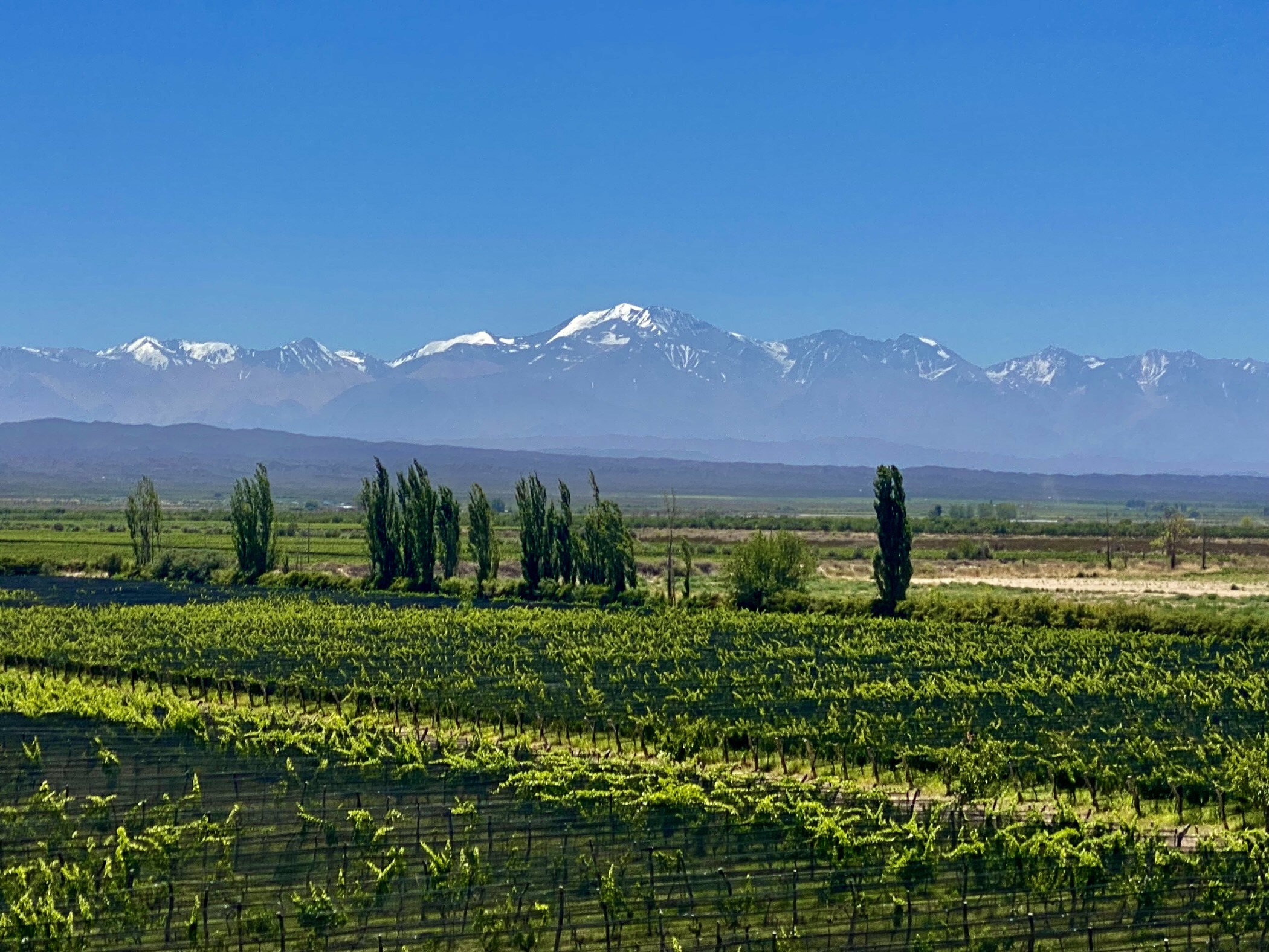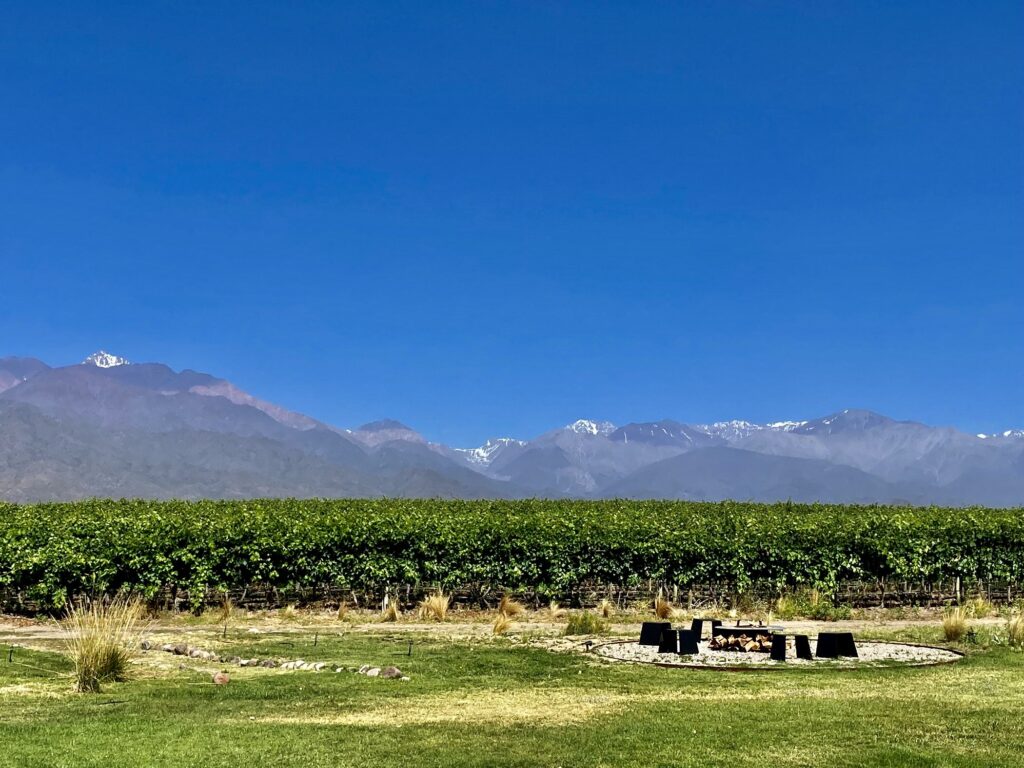
What a week! What a wine filled week! What a great birthday week!
Highlights
Luján de Cujo Wine Tasting
Our rental apartment is nicknamed “Winewalker,” but so far we had not taken advantage of the many wineries located within walking distance. We headed out to Bodega Lagarde, merely a five minute walk down the street. They have been making wine in this location since 1897, and some of the original old vines are still used in production.
The wine experiences around Mendoza tend to be bougie and expensive and include tours of the winery, requiring a reservation, of course. The other option is to dine with a multi-course meal with wine pairing that start at typically $30 USD per person and rise significantly from there.
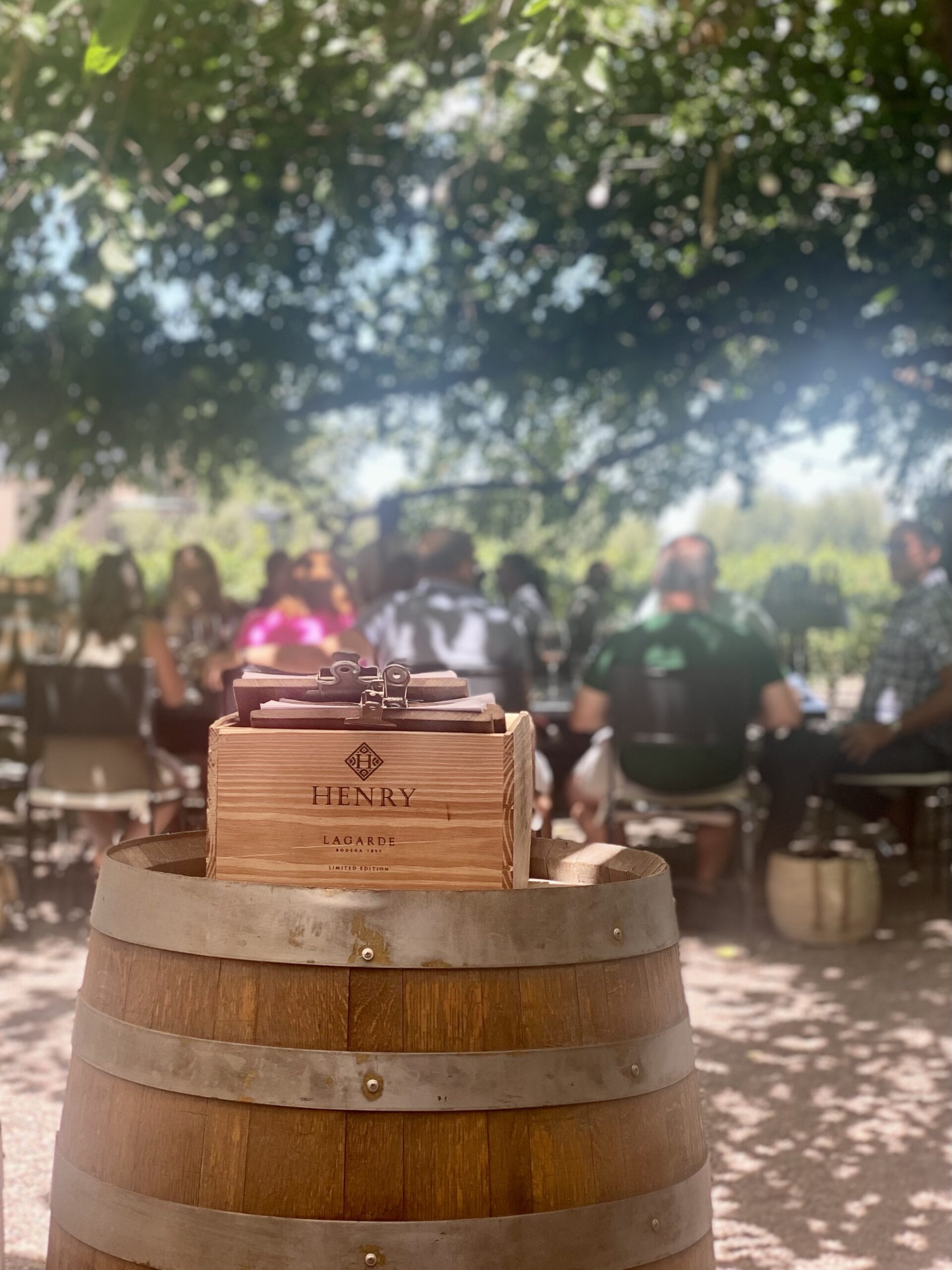
So when we walked up to the security gate, the security guard was not going to let us in. We had to assure him that we did not want a tour, and only wanted to go to the vinoteca (wine shop) to purchase wine. This seems to be the magical phrase to bypass the security at Argentine wineries. When we arrived at the wine shop, it was not a problem: we were greeted by friendly servers that helped us pick a bottle of wine and set us up in a lovely spot in the garden. We were going to just have a glass each but our server showed us that it was more cost effective to buy a bottle. A bottle of 2018 Malbec, some bread, and sparkling water was $9 USD.
The weather was clear and sunny which made for fantastic views over the vineyard.
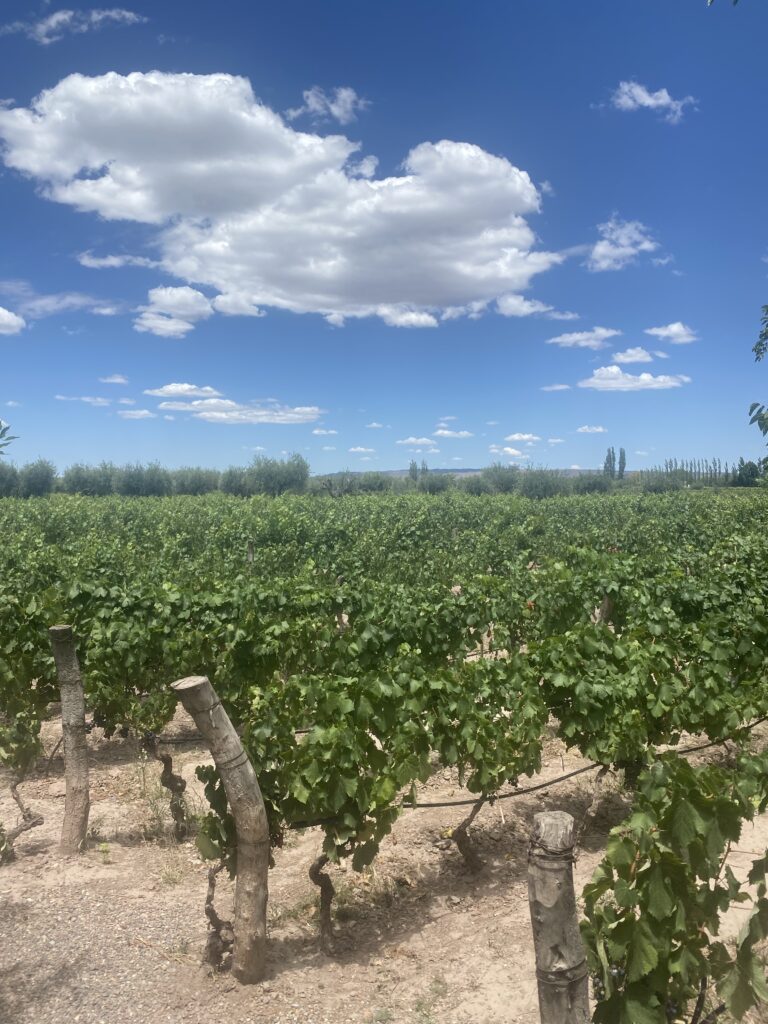
From there we walked down the road, further east from our apartment, to visit a local small production distillery, called Hilbing Frank.

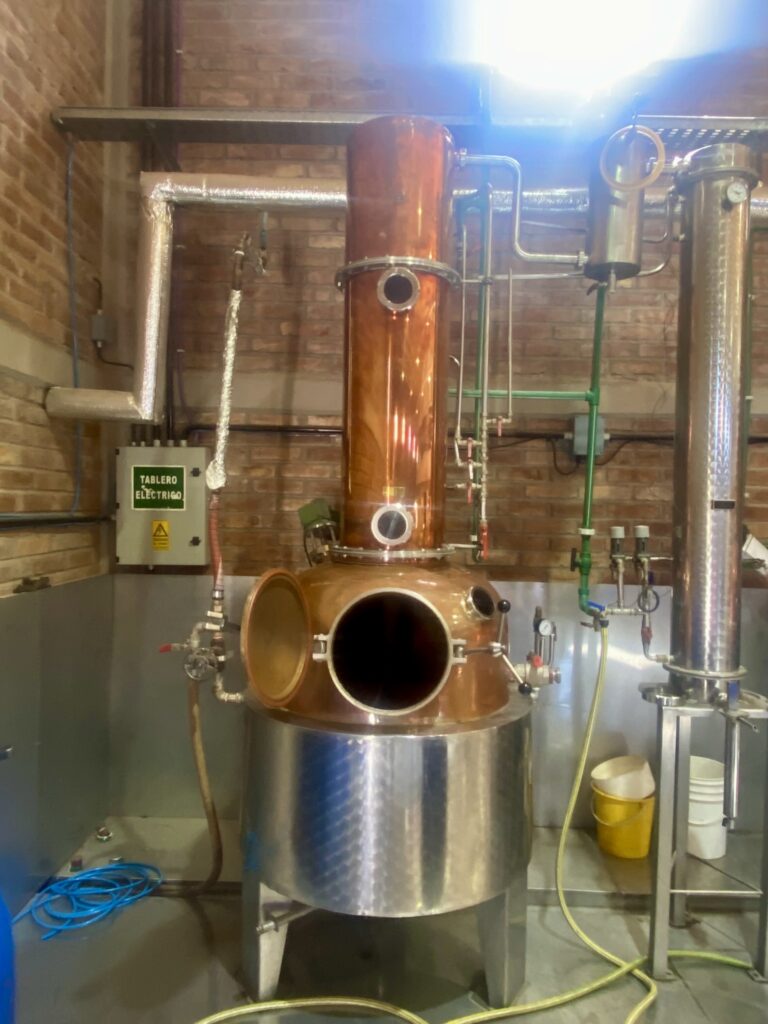
They make gins, grappa, and brandy. It felt special as even though there are countless vineyards in Argentina, not much is distilled into grappa or brandy. Hilbing Franke is a small producer with high-quality products.
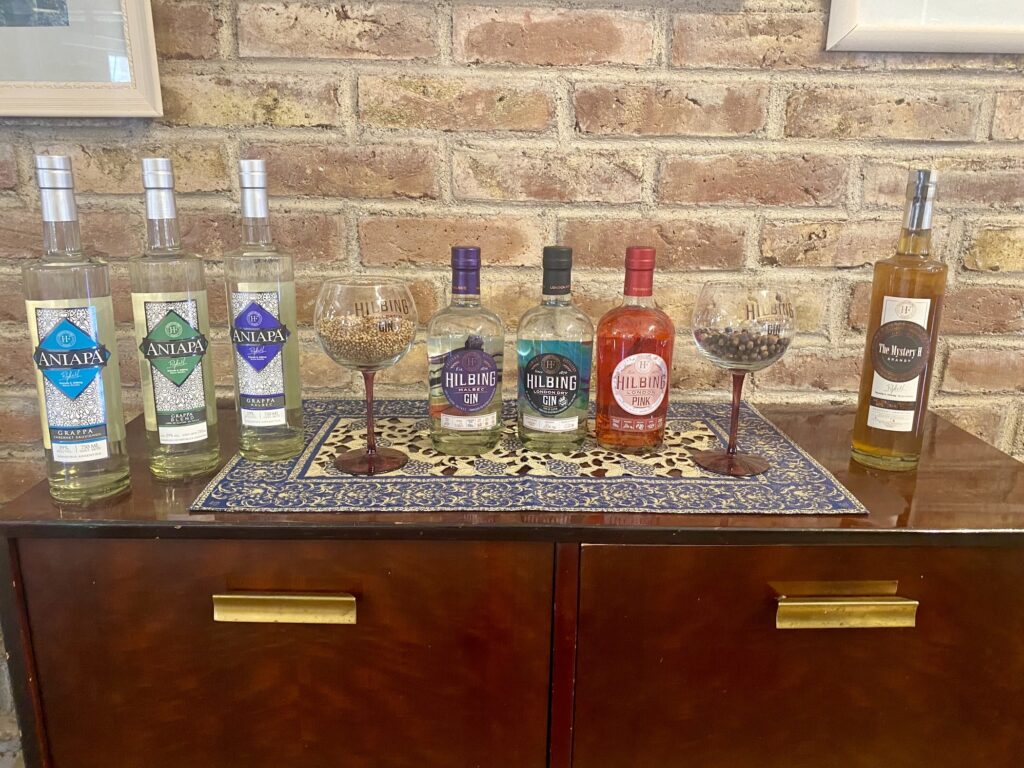
We were the only people at the tasting room and we arrived with no reservation but they treated us kindly and we had a nice experience. So nice that we walked away with a bottle of brandy and grappa. Come join us by the pool for a drink! 😆
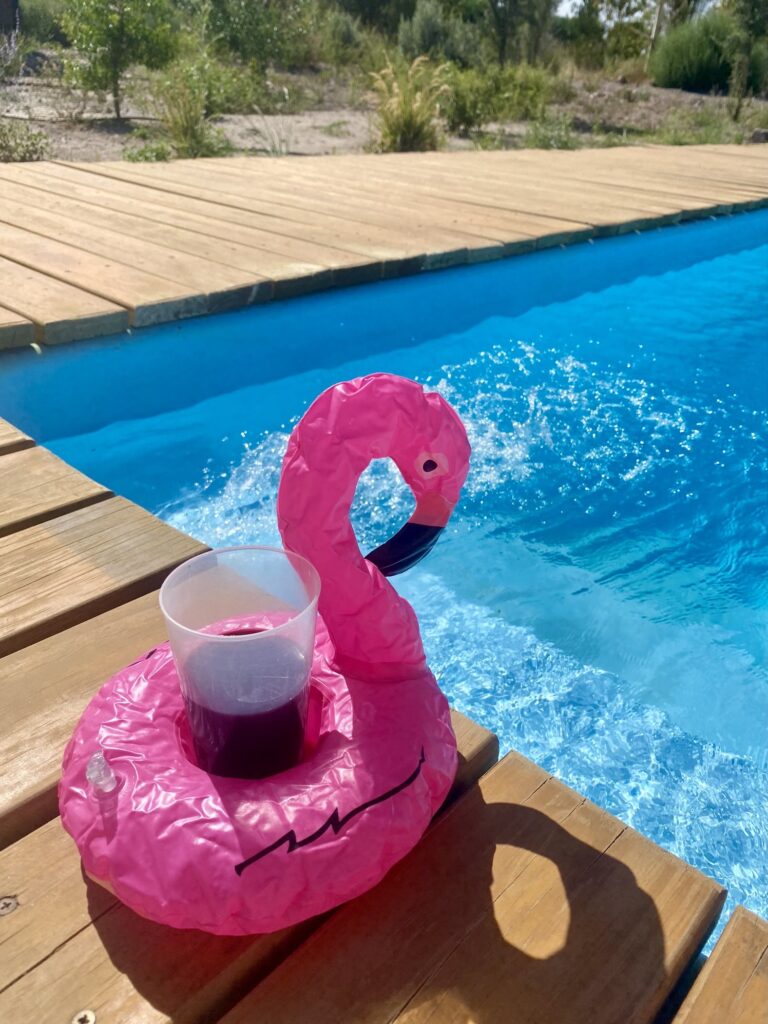
Uco Valley (Valle de Uco)
For the special occasion of my birthday, we decided to go on a mini-vacation, and rented a car to get us down to Uco Valley. To be honest, our Luján apartment is so affordable that we kept all of our stuff at the apartment and just packed a small go-bag for a few nights stay.
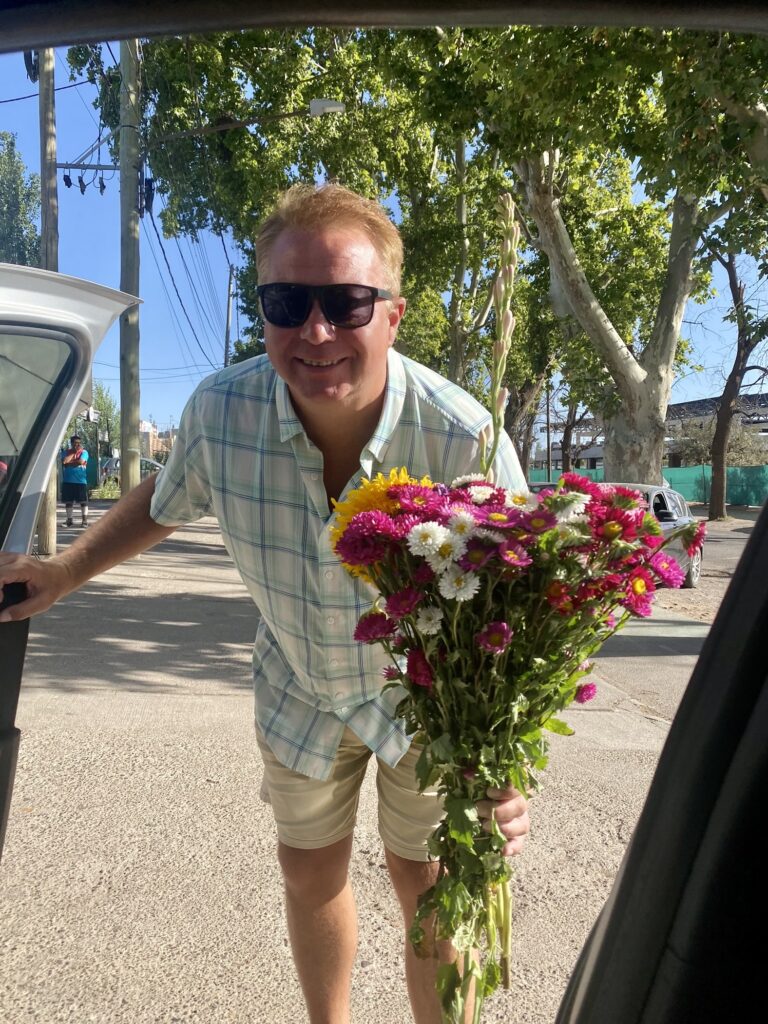
We used an Argentine rental company called Flexit, who dropped the car off at our house and picked it up there three days later. The service was incredible and the car was in good condition.
We debated whether to take a taxi or drive ourselves. We liked that driving gave us greater ability to get to the wineries, but as the driver, it also limited my ability to taste much wine.
Deep in Wine Country
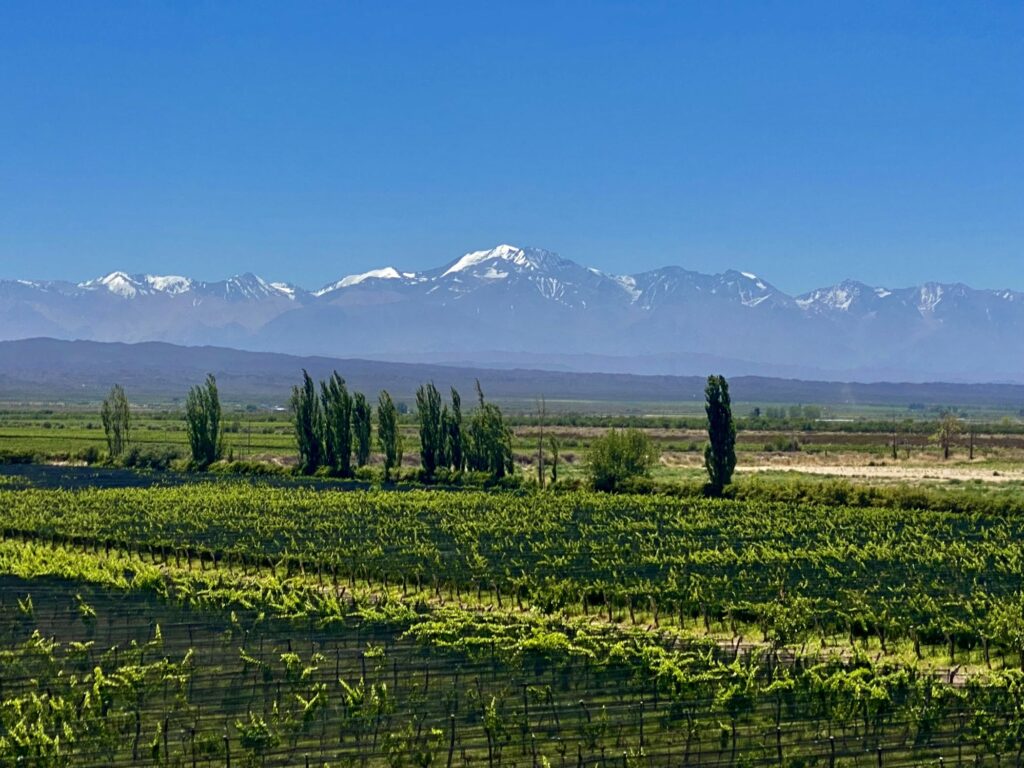
So we drove off midday and headed south, deeper into wine country. Uco Valley is about 90 minutes south of Mendoza city. It is rural and reminded us a lot of the Yakima Valley area of Washington. Small towns dotting country highways with fantastic vineyards sprawled along the foothills of giant mountains. Gorgeous views greeted us as we drove the highway and country roads. We don’t see the mountains in Luján because there are so many old and beautiful trees that block the view!
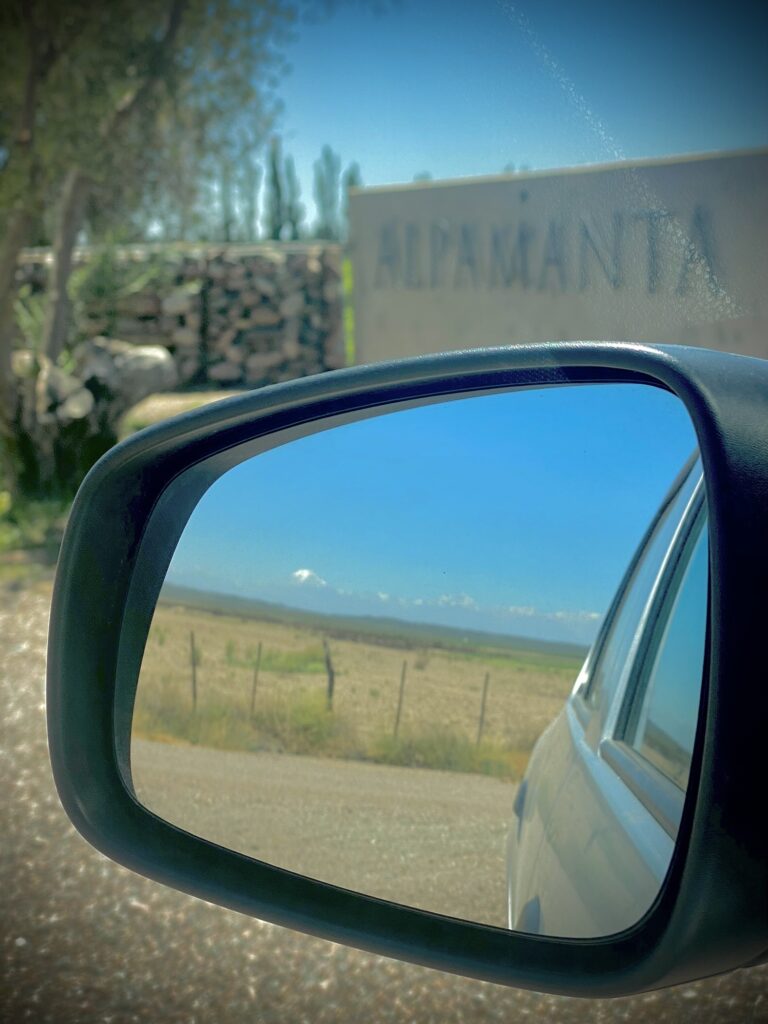
Our first stop was at Alpamanta Winery. It is a biodynamic winery in between Luján and Uco, with a gorgeous tasting room and facility. Their wines are unfiltered and either aged in concrete, French oak, or amphora (the first time we saw these clay pots in use in Argentina).
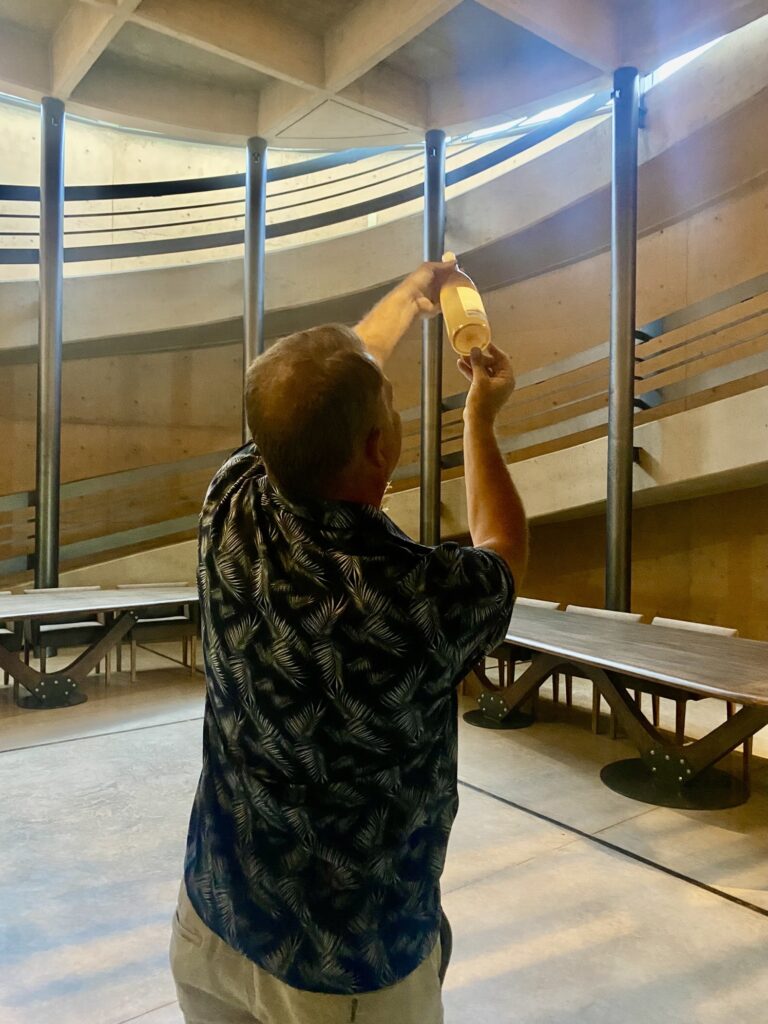
We had previously tried their pet-nat made with Criolla Chica, the Argentina name for the Spanish grape called Mission in the United States. This grape was brought to the Americas by the Spanish in the 1700’s. We have tried it in Loreto, Mexico (at an old mission), in Canary Islands (as Listan Prieto), in Chile (as Pais), and now in Argentina as a dark-red, fresh pet-nat. We now officially call ourselves global wine enthusiasts!
Because of our interest in their wines, we tried to reserve with them, but there was some miscommunication. We stopped at the winery on a day they did not offer wine tours or tastings. Fortunately, we were still let through the security gate since we said we were there to purchase wine. We did not get to taste, but we had a lovely tour and we bought four bottles (average price at $10 USD/bottle).
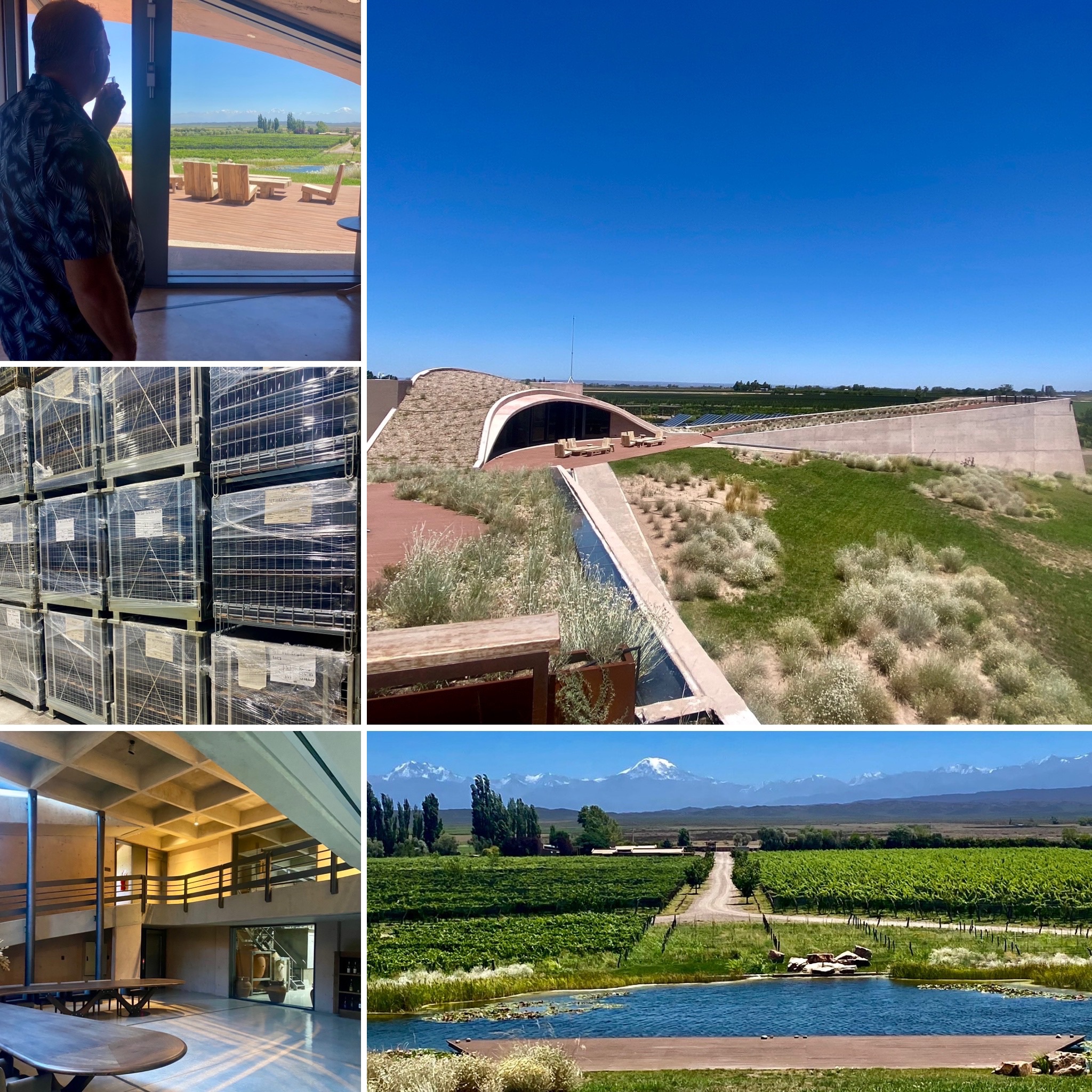
La Morada Tiny House & Lodge
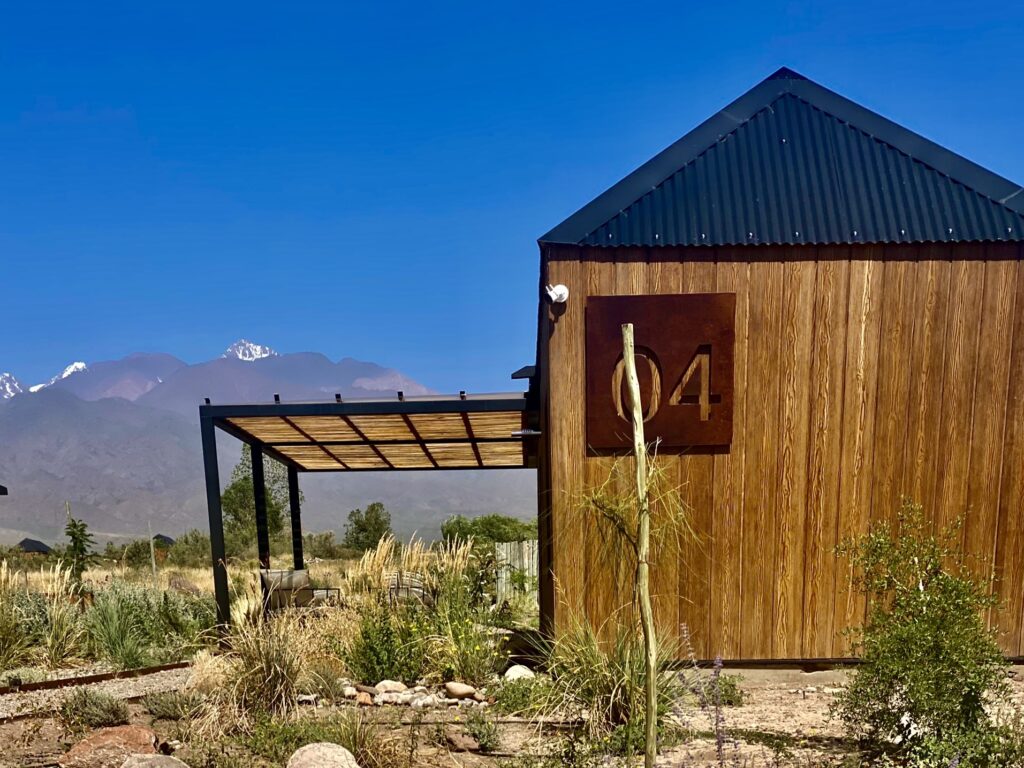
We booked a tiny house on a vineyard, part of the La Morada Lodge complex. We picked this one out of the multitude of options because it was centrally located to other wineries, featured an outstanding restaurant (with breakfast included in the hotel rate), and included a private soaking tub, shared pool, and bicycles.
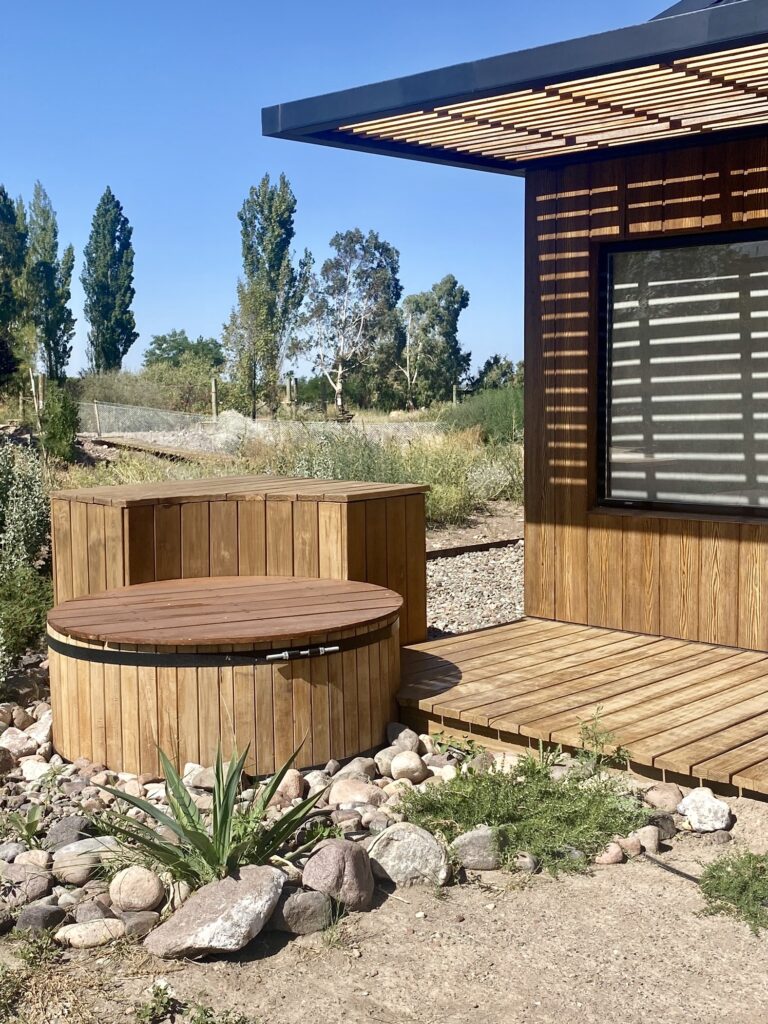
Upon arrival we drove up the long gravel path and we were so surprised to see a tennis court! It was not mentioned on their website. Of course it was the one time we didn’t bring our rackets with us. D’oh!
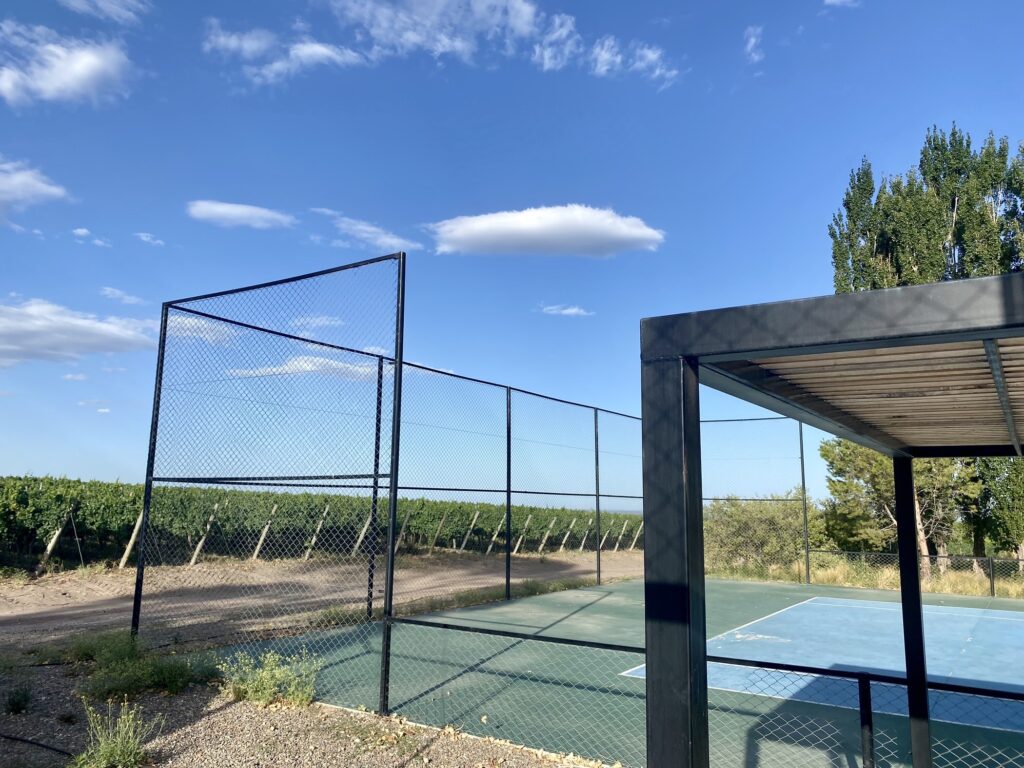
The “tiny house” totally exceeded our expectations! It was much larger than other tiny houses we have previously stayed in and even included a king size bed! The windows showed off the views in several directions and the air conditioning worked great.
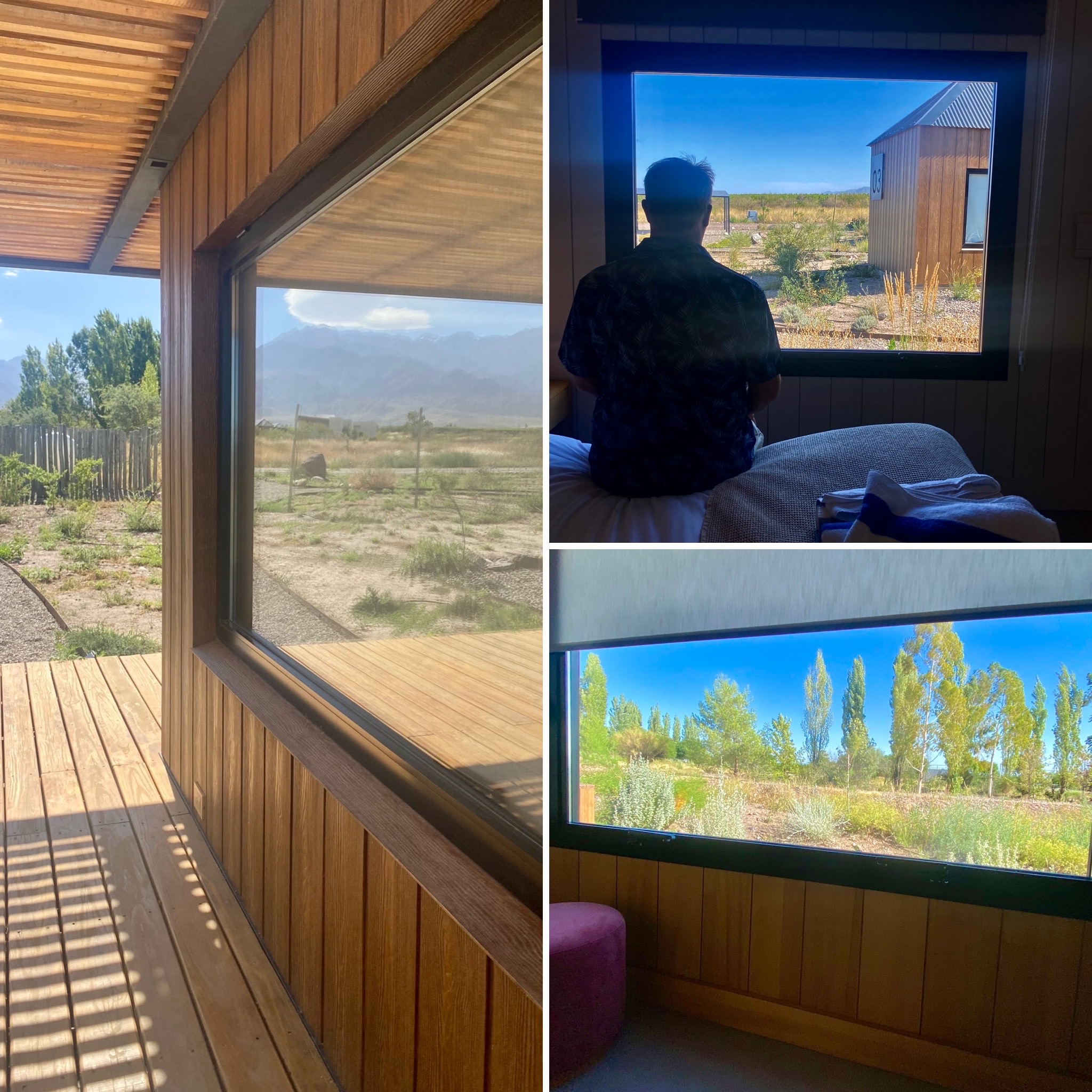
The best part was the pool, shared among the pod of eight tiny houses. The other houses were minimally occupied so we had the pool all to ourselves the first day!
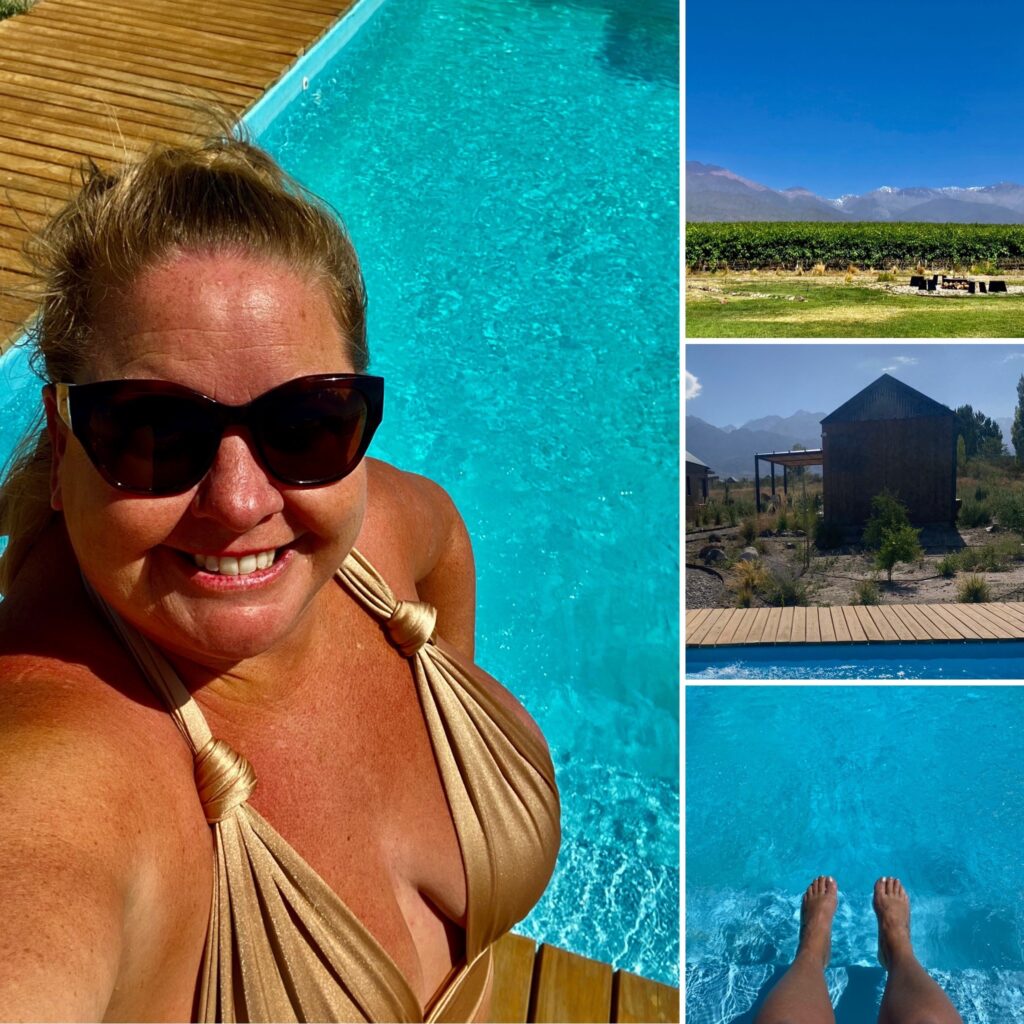
The worst part of the trip was the infestations of desert creatures. When we checked in, Corey noticed a few small ants crawling around the minibar. We called for housekeeping and they cleaned things up and left us a can of Raid. It came in handy! Corey was my hero and saved me from several enormous spiders that kept hiding among our belongings.
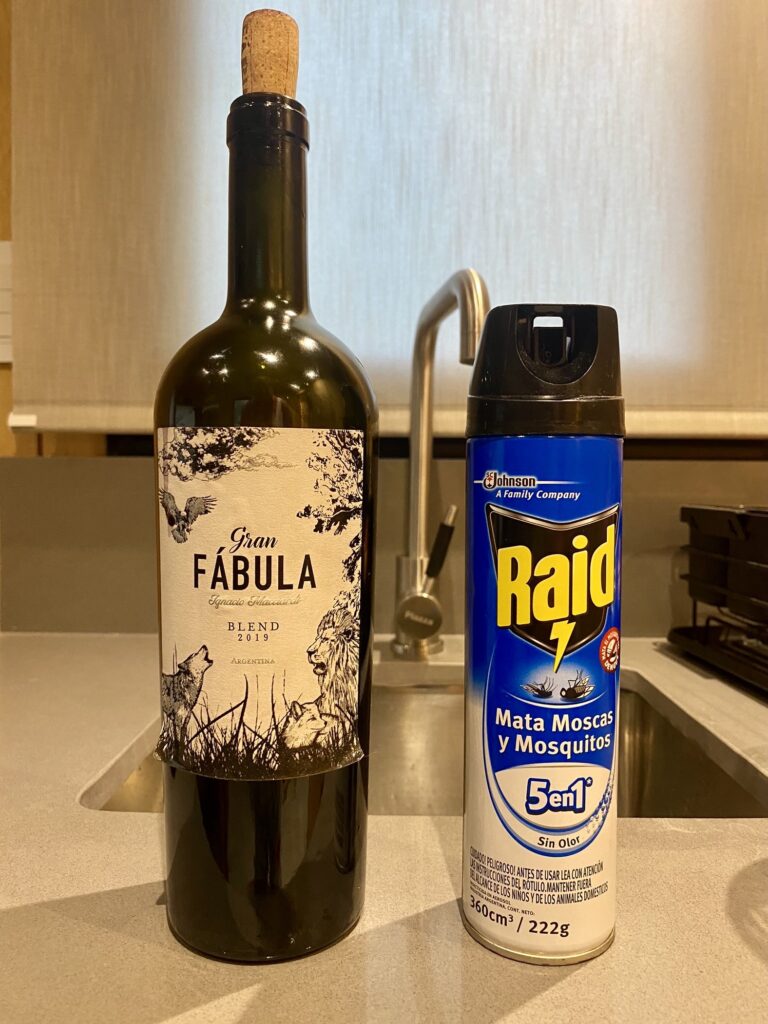
At one point during the stay I was waiting on the patio for Corey. He was taking awhile and then I heard the can of Raid spray going off for a long time. I wanted to make sure everything was okay so I peeked my head in the door and unfortunately saw the death of a LARGE spider. Makes my skin crawl just thinking about it. Normally, Corey crushes spiders but this one was large enough to crush him back, thus the need for chemical weapons. Eek!!
Dining at Hornero
Dinner at the lodge was beautiful. The restaurant is called Hornero due to the use of two wood-fired ovens. Upon opening the door to the dining room, we were greeted with the pleasant aroma of wood smoke. The room is above the wine cellar, with two windows in the floor that look down into the cellar. The space opens onto the patio, where there are views of the vineyards, the grounds, and the wild Guinea pigs that run around munching on grass.
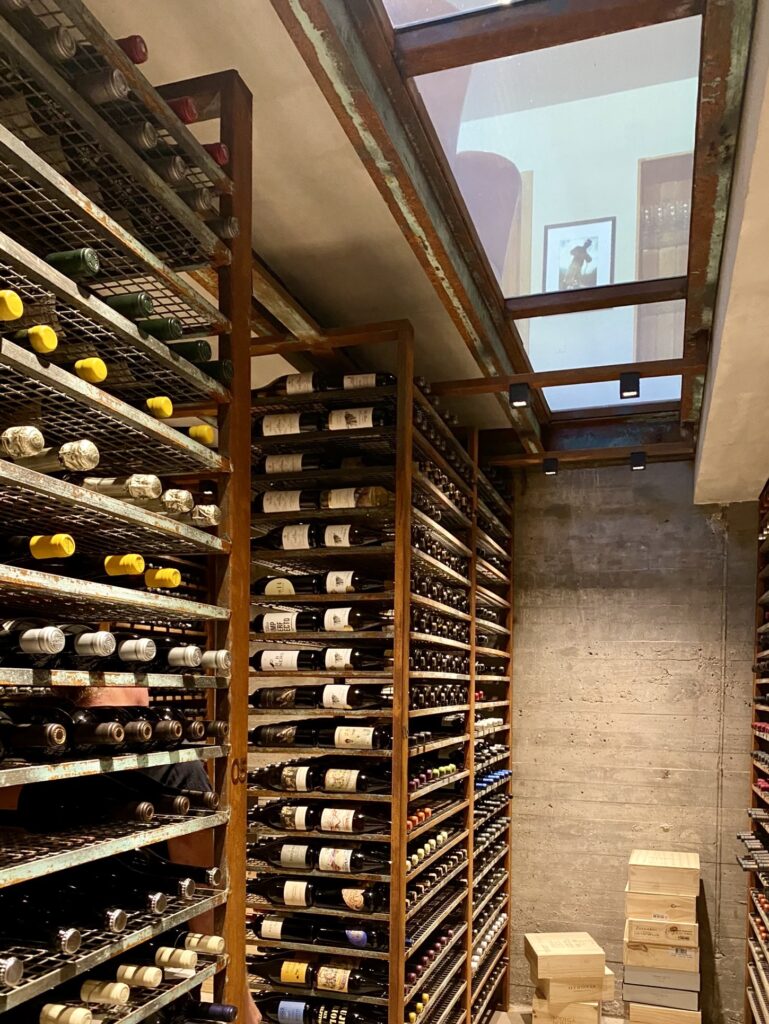
We had dinner at the same place both nights. One for convenience, and also because the first night totally wowed us with the smoky, delicious food. Highlights were oven-cooked raviolis in cream sauce, a ribeye cap that was smoked for four-hours and still came out medium-rare, and an Asian-inspired pork loin (rare flavor for Argentina, in our experience). We ordered significantly less food the second night, haha!

The wine list was the best we have seen in Argentina so far, with hundreds of bottles from various local producers, including many who produce from grapes grown on the property. (We hope to see better wine lists once we reach Buenos Aires.)
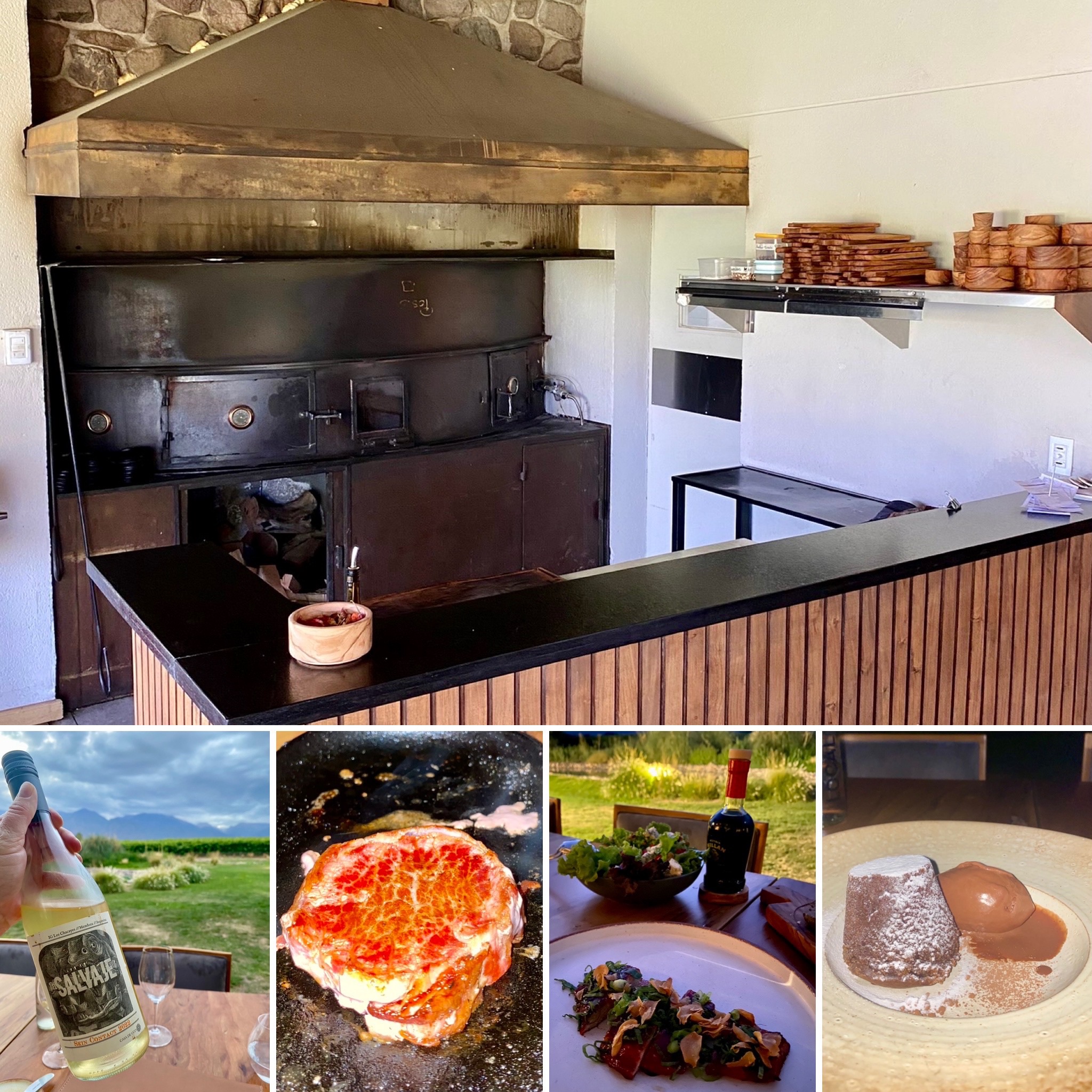
Before heading out for wine, we soaked up some morning sunshine by the pool and enjoyed breakfast at the lodge. I don’t know how we were able to eat again after just having dinner there only 12 hours before.
The cheery staff greeted us with fresh baked breads, eggs, and fresh fruits.
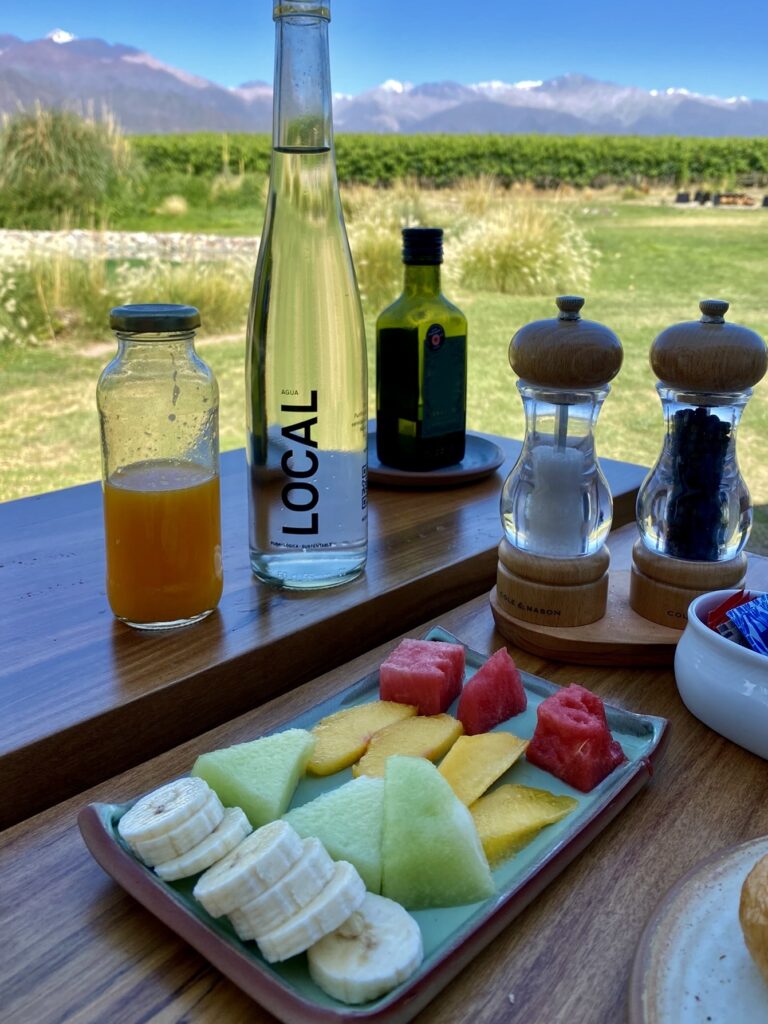
Wine Tasting
We had Bodega Albaflor on our list to stop by, but as we drove down a dirt road, we saw no sign that they were open to the public (and indeed, saw no signs at all for the winery). There were a few bodegas marked on Google Maps that appeared to be solely production facilities, without even a vinoteca for the public. But Claroscuro Bodega appeared open, and there was no security guard to deal with.
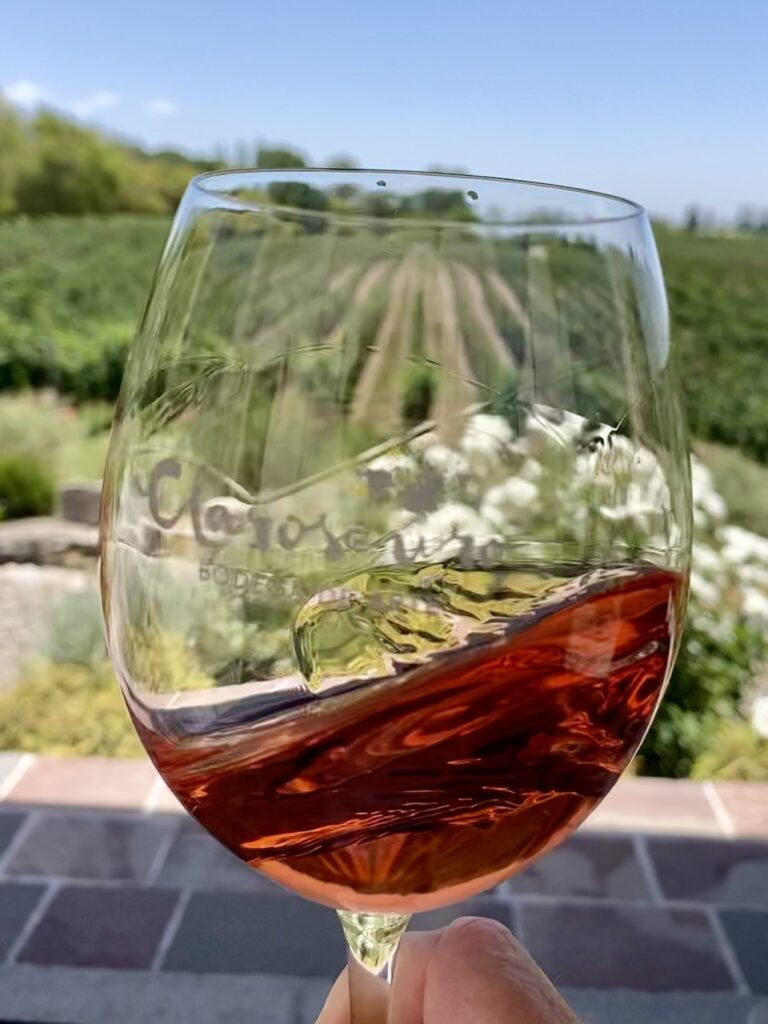
We went inside and found no tasting facility, but their restaurant was open. The staff poured us a few tastes of wine, which we enjoyed on the patio. The patio had lovely views over the property. On the way out we picked up a bottle of wine ($7 USD) and left an American-sized tip for their assistance.
Further down the road is an cluster of wineries known as Clos de los Siete. Winemaker Michel Rolland and six friends (the seven, or siete) purchased the land and there are currently four wineries onsite that produce using estate fruit. The Clos de los Siete blend combines grapes from all four vineyards into a Bordeaux-style blend. Again, we were stopped at the entrance by security until we explained that we only wanted to go to the vinoteca to purchase wine. We were directed to the main visitor center, which sells wines from all four wineries. There we were offered tastes of a few of the reds, and we ended taking a 2014 bottle red of with us, $16 USD.
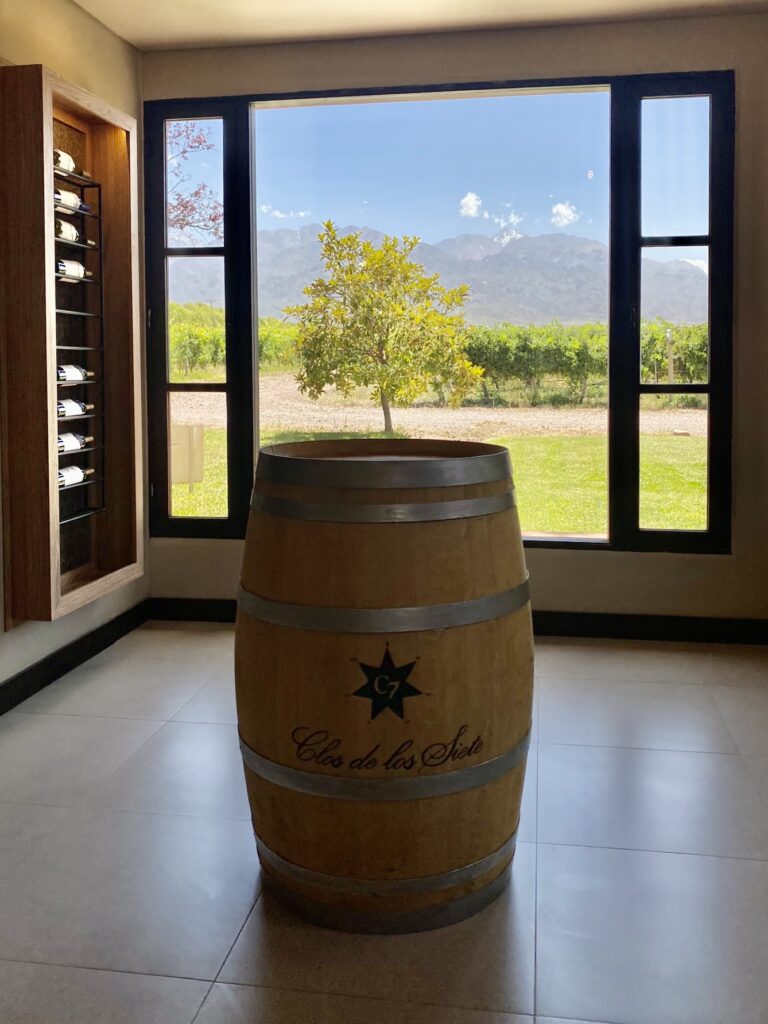
The next day, after breakfast and pool time, we checked out and drove “across the street” to SuperUco. As the crow flies it’s only a few miles away but it took about 20 minutes to get there via the slow gravel and stone roadways.
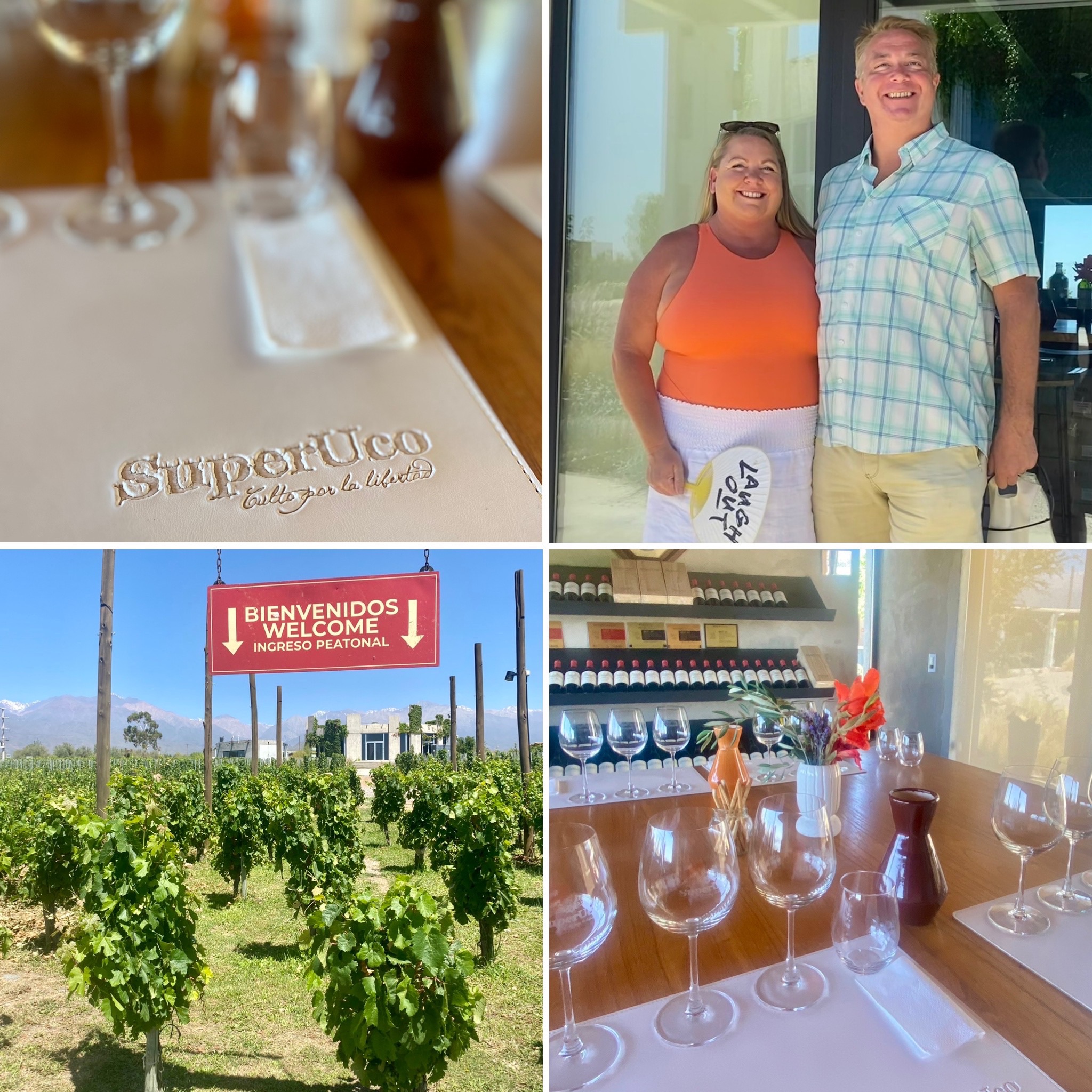
This time we did have a reservation: in the Spanish-language tasting! Both of us were able to keep up with the Spanish presentation of wines. SuperUco is a biodynamic vineyard, and they offer a variety of wines from different places around the Uco Valley. We had a flight of three Malbecs from different soil types, all made into wine using the same treatment. This was followed by a blend of the three, and a couple other red blends. It was a nice tasting experience!
We then stopped for lunch at La Posada del Jamon, the Ham House! They cure their own hams and the process can be viewed through a window. There are dozens of hams hanging from the ceiling, and rare for Argentina, they do not serve any beef. Of course, we ate ham!
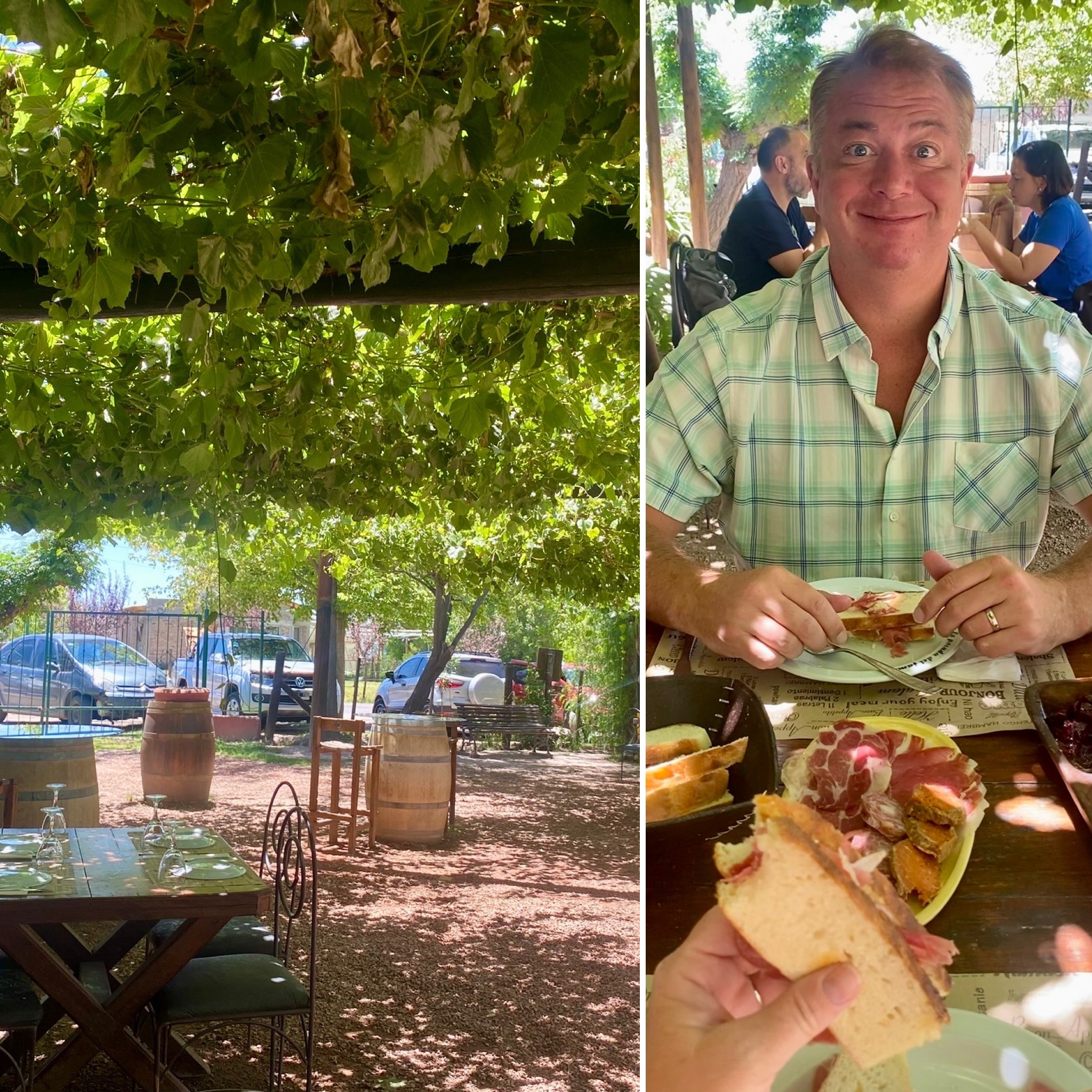
Our drive back north was a meandering drive through the historic areas nestled into the bottom of the Andes, where the road is a slow country drive past rambling brooks, orchards, and vineyards.
In the late afternoon we were able to sneak in a glass of wine at Bodega Salentein. They’re a large producer of wines with multiple labels. Same story with the security guard, who insisted that because of the late hour, we could buy wine but not taste it. When we were inside, though, we were invited to buy a glass of wine and sit on the balcony, overlooking grapevines as far as we could see.
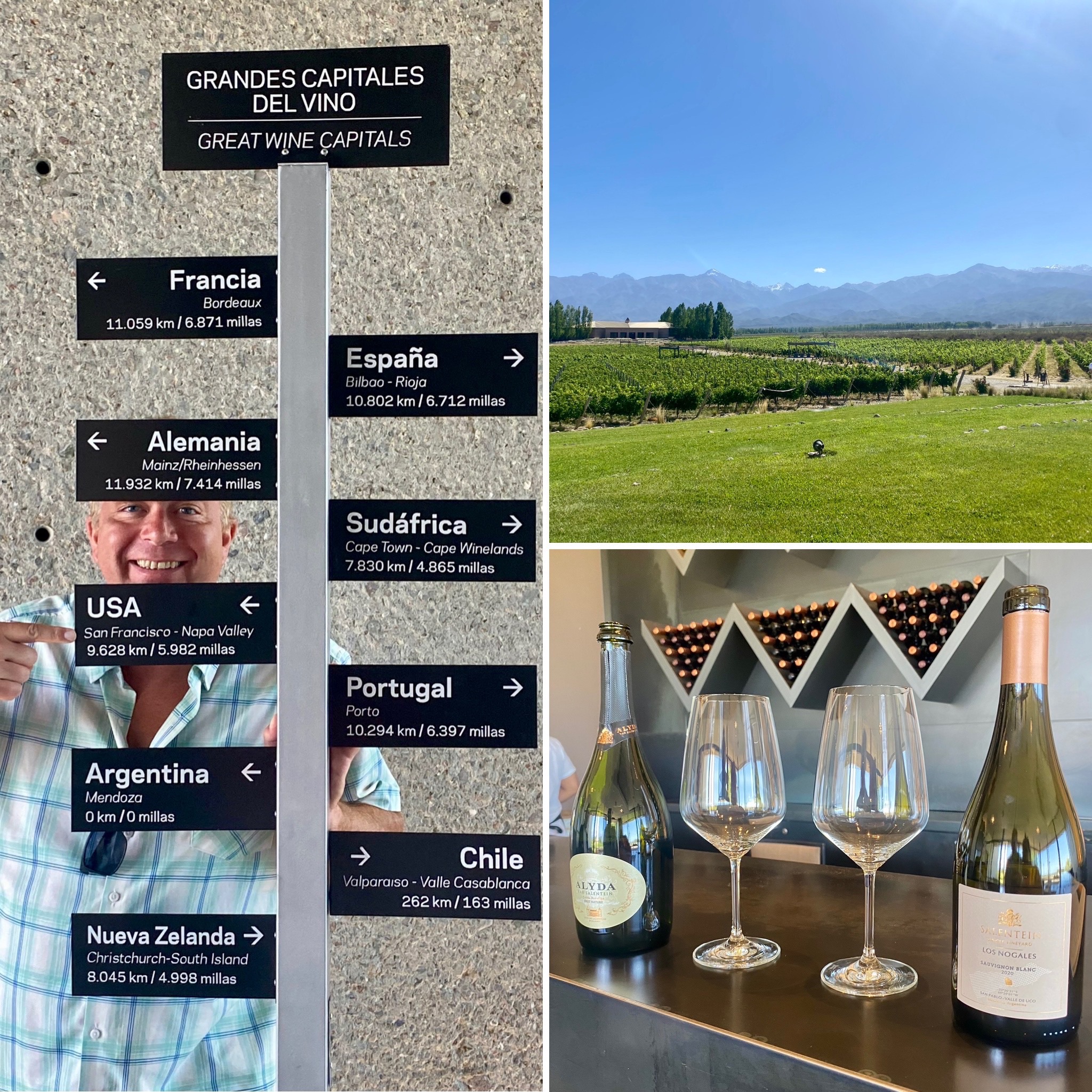
We have tried and liked Salentein wines, and it was an interesting experience to contrast this enormous wine house with the smaller producers that we had visited. The tasting room was actually multiple rooms and there was even an art museum onsite. I enjoyed the sav blanc and Corey sipped on sparkling wine.
We closed out the day closer to “home” with a fantastic meal at El Mercado de La Gloria in the Chacras de Coria area of Lujan de Cuyo. All was good, but especially the dessert!

Uspallata
Though it was my actual birthday we went to bed early to make the most of our car rental the following day. We woke up at sunrise and crawled back into the car to spend the morning exploring the Andes via car.
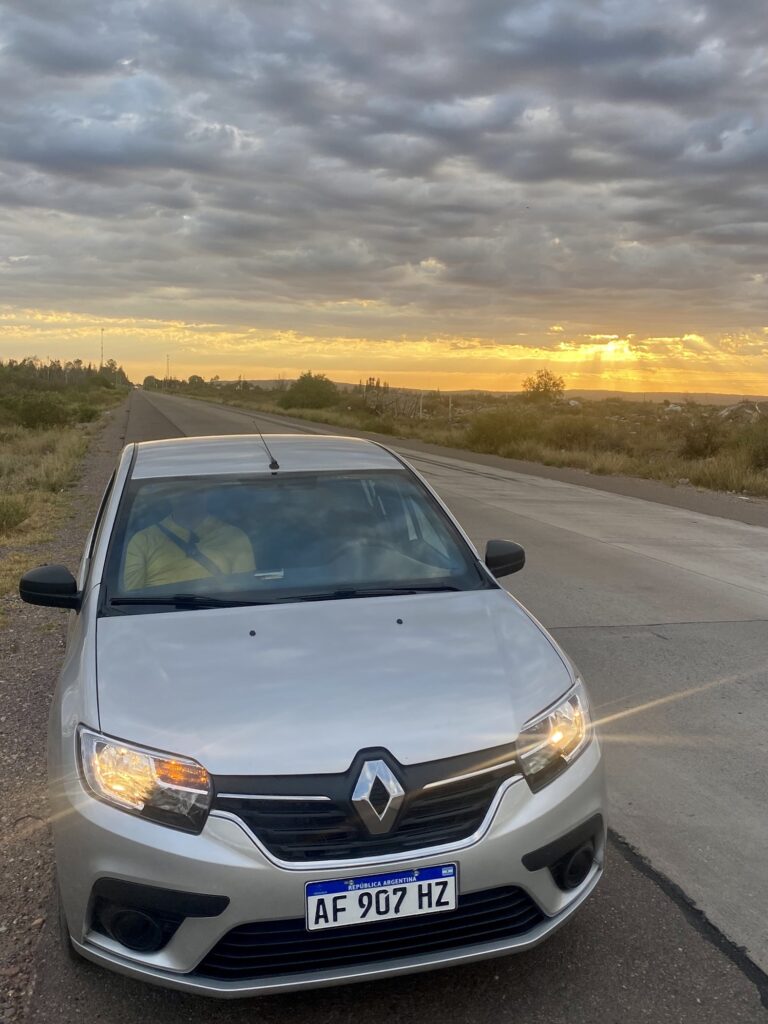
The sun was shining brightly and there were few cars on the road.
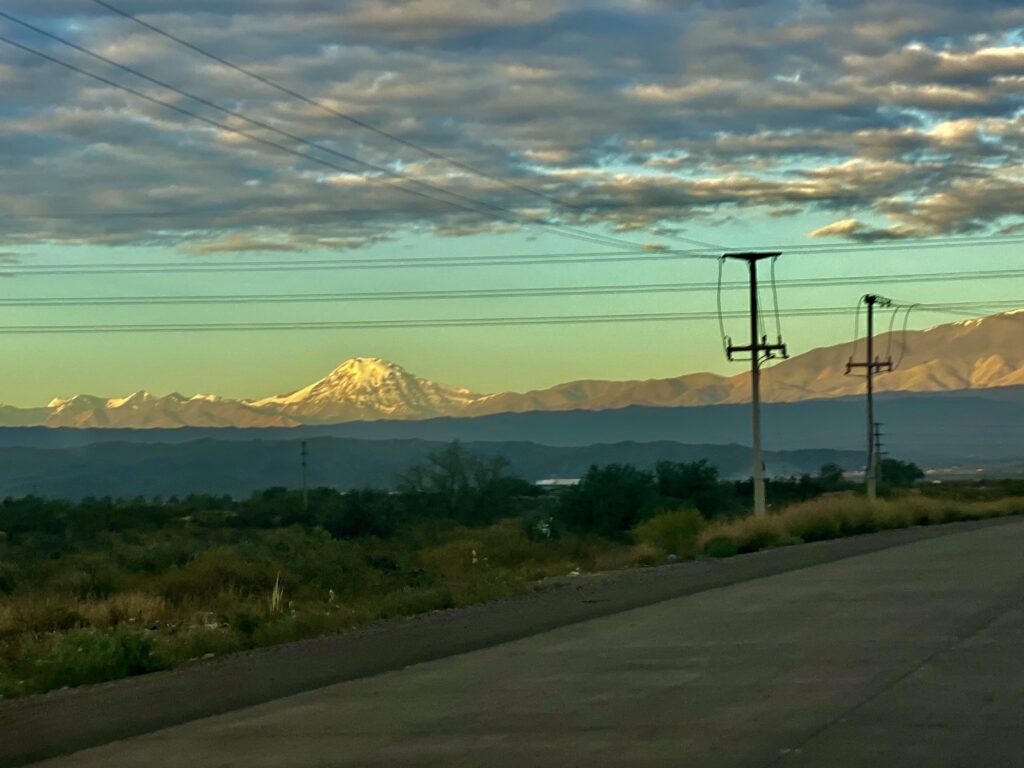
We drove out to a spectacular site, the Cerro Siete Colores, or the Seven Colored Hill.
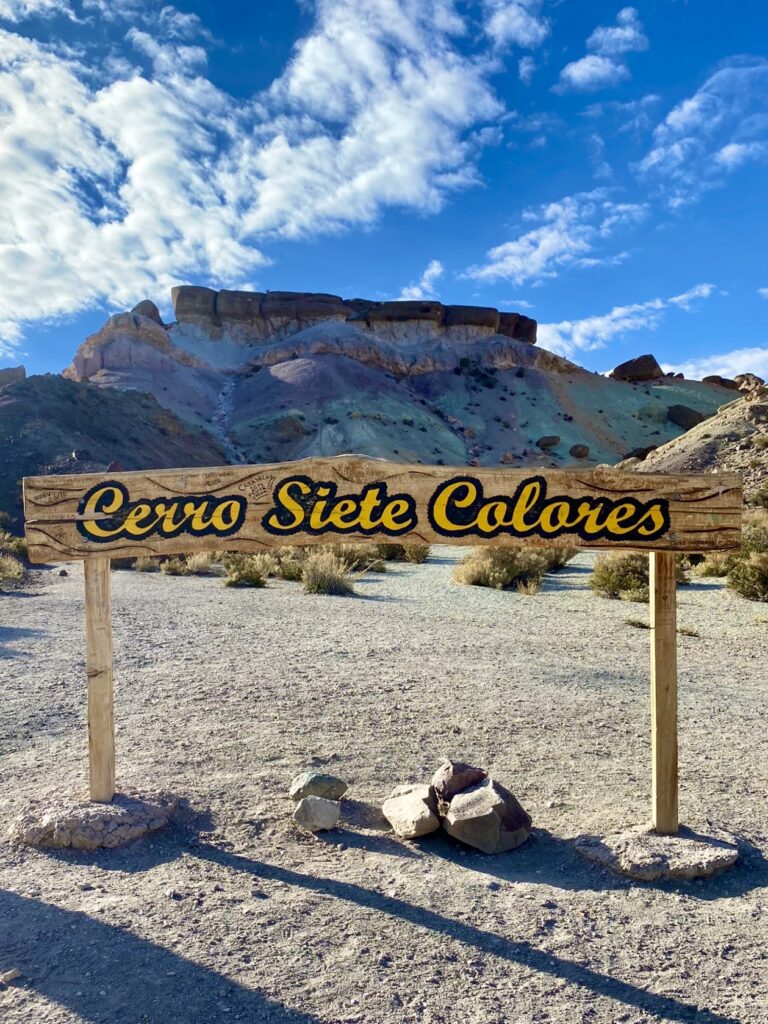
The hillsides greeted us with varying colors of green, purple, and aqua.
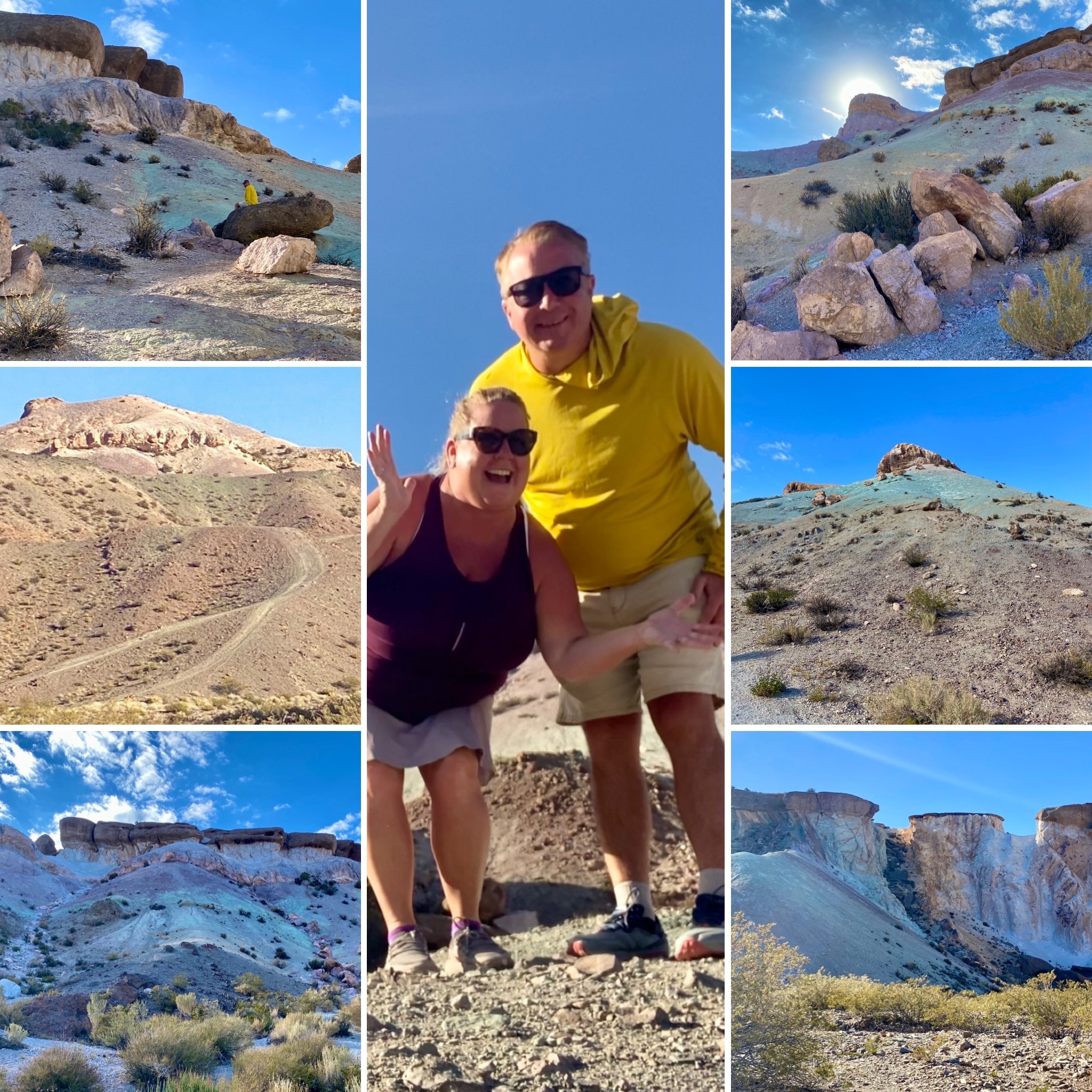
The best part: we were the only ones there. Corey and I walked up and around in solitude with nature. Even the rocks were colored? Why? Mineral deposits.
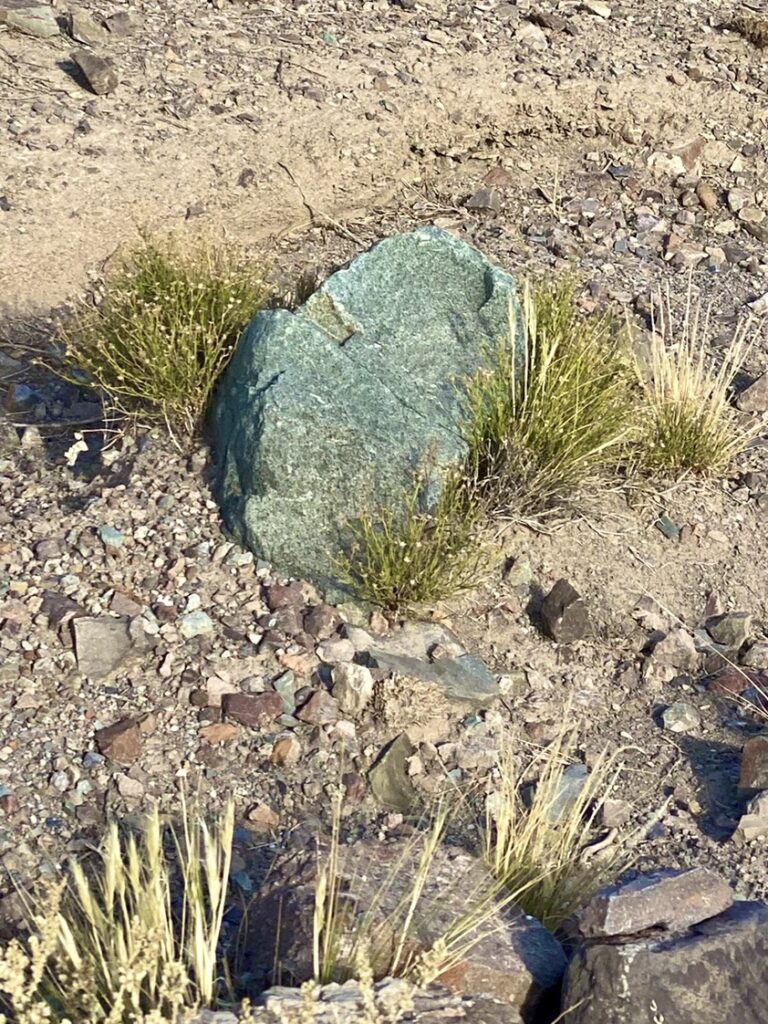
The drive was a slow five-mile drive out of town on a gravel and stone road. On the way there I was so focused on the road I missed the scenery coming in. On our way out I was really impressed with the various colors all along the hillsides.
In order to make our midday car return time, we started back on the two-hour drive to Lujan de Cuyo.
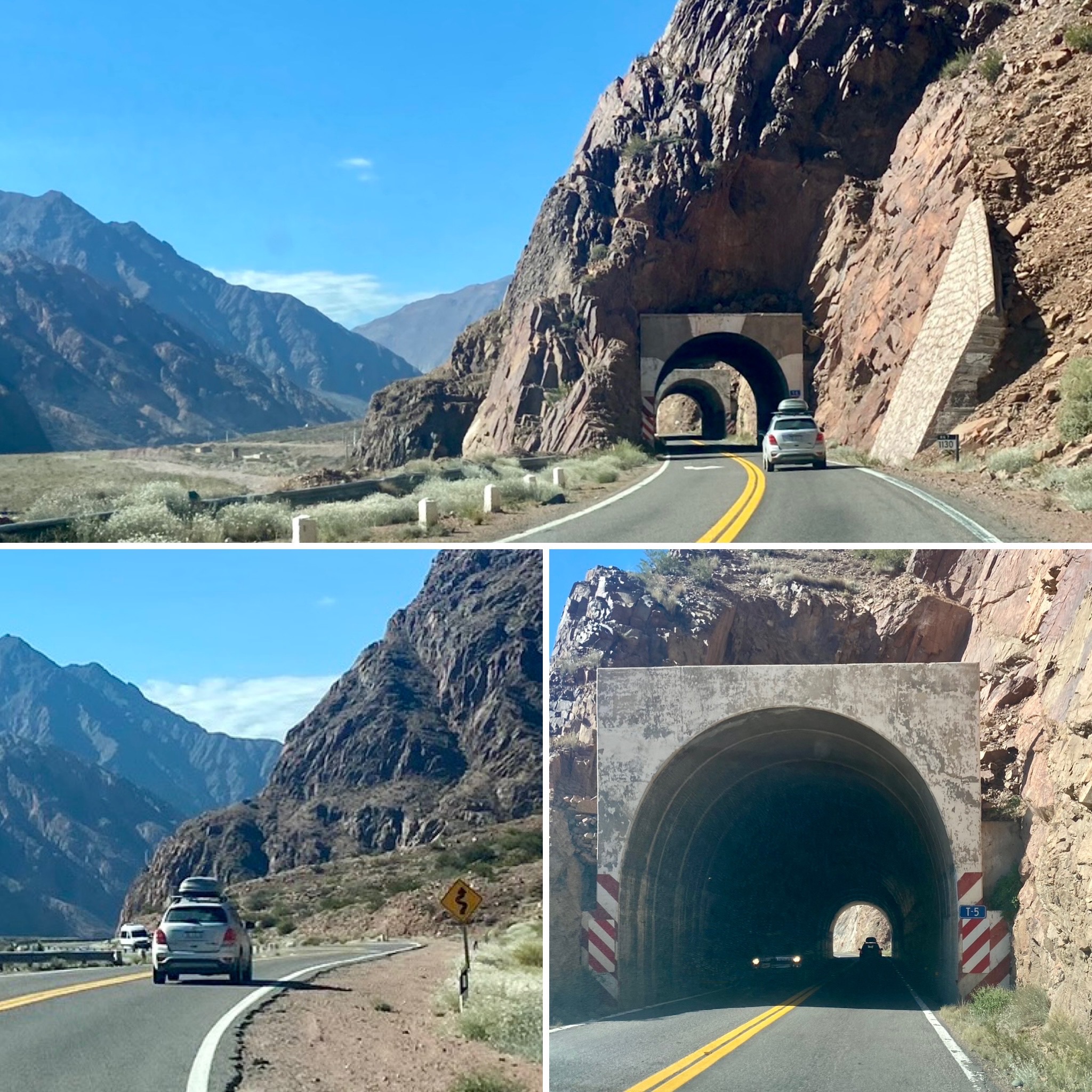
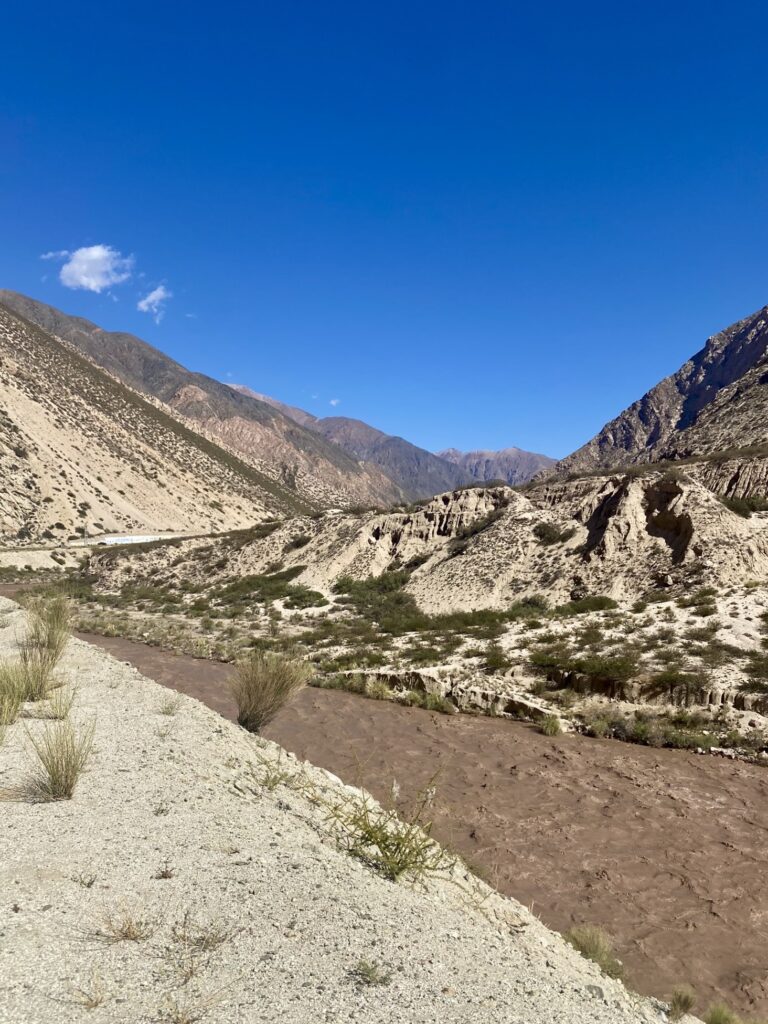
The drive was gorgeous through the Andes, along the Mendoza river, and skirting the lake at Potrerillos. The blue-green sparkling water literally took my breath away like stunning Lake Tahoe.
We stopped a few times to snap photos and take in the views.
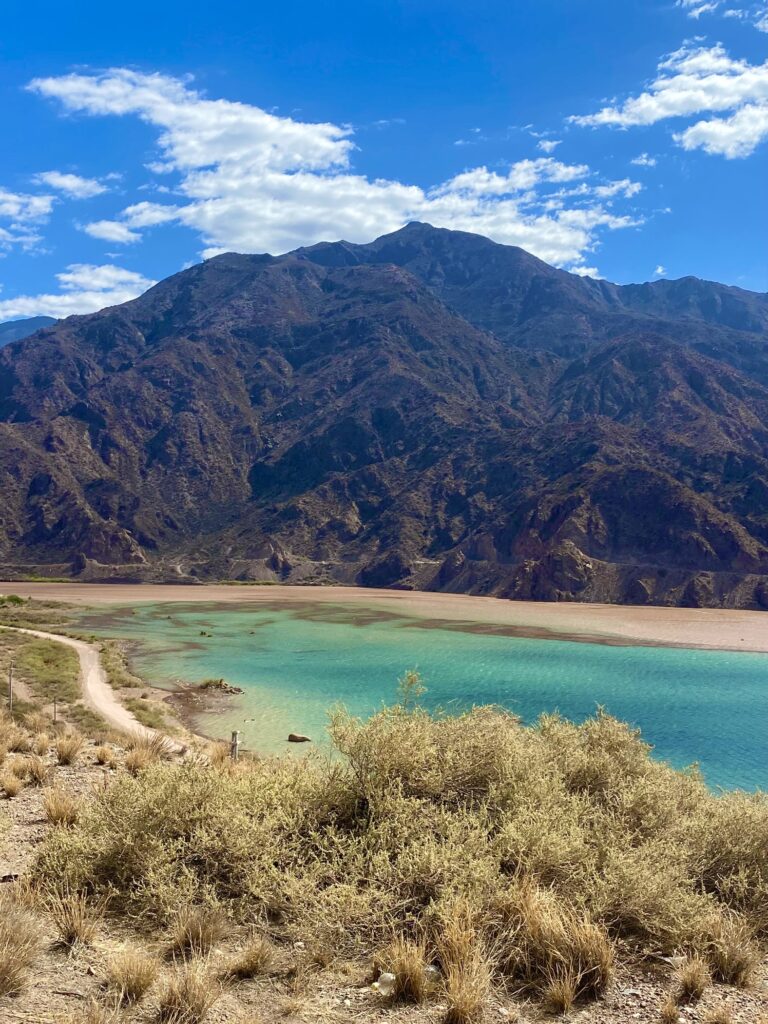
We saw sailboats, SUPs, kayaks, but no swimmers. I’m guessing the water must be cold! The bright lake in the desert reminded me of Lake Mojave in Arizona and all the wonderful trips my family had there while I was growing up.
The dam’s construction was finished around 2003 and provided hydroelectricity, irrigation, and flood control. It has also provided a beautiful setting for people to enjoy. There are many activities around the reservoir and is a major tourism area as it is located near to Mendoza.
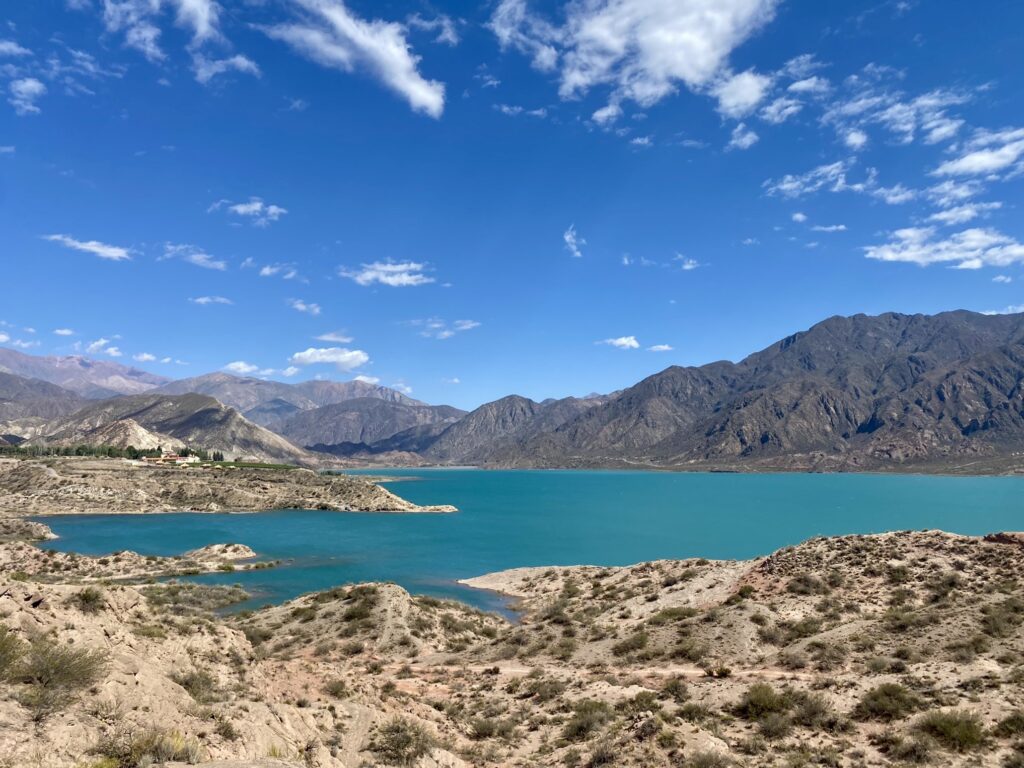
Argentina is a large country with so many wonderful places to explore. I’m so glad we rented wheels to get our see the views away from the city. We’ve barely scratched the surface around here!
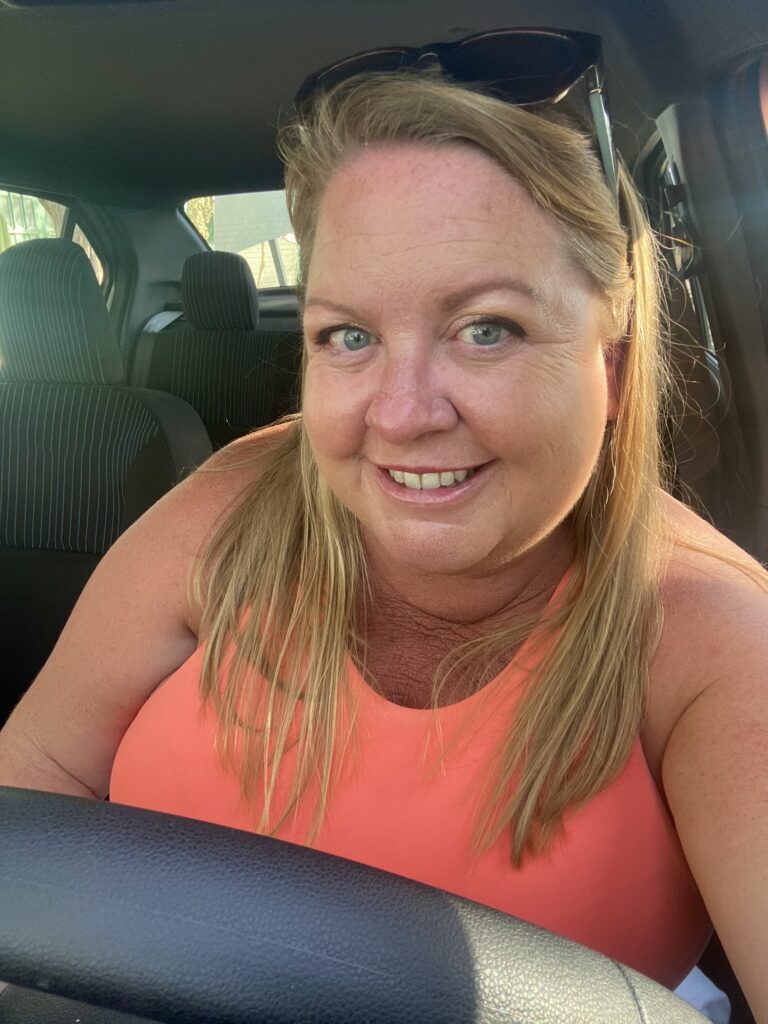
Thanks for following along with me on this birthday trip!
